By
MORILLA MARIA NORTON
Author of
Songs of the Pacific
A Kingdom of the Sea
Verses from the Orient
Gloria Victis

The Project Gutenberg eBook of Outposts of Asia, by Morilla Maria Norton
Title: Outposts of Asia
Author: Morilla Maria Norton
Release Date: November 22, 2022 [eBook #69407]
Language: English
Produced by: The Online Distributed Proofreading Team at https://www.pgdp.net (This book was produced from images made available by the HathiTrust Digital Library.)
[Pg 1]
By
MORILLA MARIA NORTON
Author of
Songs of the Pacific
A Kingdom of the Sea
Verses from the Orient
Gloria Victis

THE MAGNET PUBLISHING CO.
MANILA, PHILIPPINE ISLANDS
[Pg 2]
COPYRIGHT, 1909
MORILLA MARIA NORTON
MANILA, PHILIPPINES
[Pg 3]
To M. B. N.
Great Mother, dead but living,
Living but dead,
The snow falls fast,
In this death month of all the year.
White flakes like messengers
Sent upon the blast,
From Heaven to light upon thy bier.
Like this death month of Nature
Such thou wert and art;
Cold with unsullied purity of will,
White with the soul’s austerity of charity,
Yet holding all the flames
Of summer’s glory in thy heart.
Yokohama
January 7, 1909
[Pg 5]
[Pg 4]
In writing this book of a journey through Manchuria, Korea and Japan, it is partly a tribute to the hospitality of the Imperial Railway through whose kindness I made the picturesque tour on the track of the fighting line across countries on which so much attention has been focused in these last years, partly to fulfill a pledge made to the Manila Merchants Association, to write in a book of travel through Russia a chapter on Manila, which chapter is the last in the volume.
Among the few treasures which the traveler feels he must carry away from that land of art—Japan—the writer chose a kakemono representing the grim old fighter Ieyasu dressed in his stiff brocade of choice pattern which the elegance of his life demanded.
He sits not on horse, nor in palanquin, but at ease and in reflective mood in his home, his queer head-dress arching out from his falcon-like head, holding in one hand a sword even in this hour of leisure, ready to spring upon his country’s foes, in the other hand a roll of paper, for he was like the great Charlemagne, a man of letters, as well as of battles.
Sensitive, fine and piercing as a blade, is his glance, delicate as a woman in the finish of his attitude, yet commanding, imperious, indomitable and over all and through all, a scholar, not in the infinitesimal detail of the school, but in the magnificent sense of life, one who learns from all experience and progresses through everything and acquires in every phase of fortune and misfortune, leaving to the world the priceless inheritance of such scholarship, hope, faith—nay, charity! What Ieyasu was, so to me seems his[Pg 6] race, imbued with the large serenity which grasps ages, not minutes; it can conquer, or be conquered, with equal grace, without self-elation, or self-abasement, but with the majestic nature of the true theist and the true altruist advances to its destiny reaching as does all greatness its maturity slowly, until it becomes the master of itself and of others.
The ethical beauty of the home life of Japan, the charming routine of the schools, the fraternal relations in the army and navy, the courtesy between master and servant, in the factory and the shop, and in the home is all delightful to see, and the welcome to the stranger, that finest flower of civilization, as of character, to feel!
The soft grey coloring, the subdued green, the reserve of forest and field, unlike our own exuberant Philippines, at first seem shy, demure, not a little austere, but as you pass the days and nights there the subtle influence of the Northern Italy works its miracle and you yield as every one has before you, captivated by an influence too complex to define. Japan has the “charme intime,” as the French say, the charm which penetrates but holds forever.
Massive, Greek-like Korea and colossal Manchuria, bold, daring as the fastnesses of Asia are, overwhelm the imagination and leave you stirred to their heroic level!
But a glimpse, a panorama of these graphic countries is all these pages can bring.
Each has a magnetism one must experience, and as one New Englander said of his native town, it needs no pennies in their fountains to call you back to retread their sublime and lofty pinnacles, or their exquisite by-paths.
These pages were for the most part published in the daily press of Japan, and were written “en voyage” or within the hospitable doors of the Astor House, Seoul and the Bluff Hotel in Yokohama. They form notes of travel rather than a conventional book.
[Pg 7]
[Pg 8]
[Pg 9]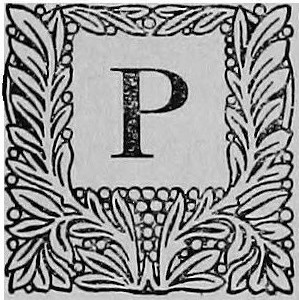
Port Arthur is the most dramatic spot away from Europe: nothing that Nature can do, or history suggest of grandeur is lacking in this stupendous panorama!
Hills which have been swept bare by shot and shell are still bare and will be as the palm of the hand, to denote what has passed over them!
A huge fortress-like eminence suggesting Gibraltar, stands out like the champion of the army before the series of forts which lie behind it.
There are two bays, “Pigeon Bay” and “Kerr Bay,” which have dimpled waters of sparkling blue and admit ships on both sides of this gigantic promontory.
As you leave the station, you find yourself facing a long stretch of unkempt ground, over which the new town is being erected inland.
Further behind lie the cliffs, rising one within another, with a series of natural fortifications, one of which has begun its immortal fame, “203 Metres Hill.”
Its sides are covered with huge stones, piled in volcanic confusion, partly by nature, partly by the concussion of balls.
This point, as all remember, was surrounded by a barbed wire fence and heaps of sand bags.
On one edge men passed over living flesh and dying flesh, their hands torn from the sockets, as they mounted up a perpendicular side of some three hundred feet.
[Pg 10]
The hills on the land side are well covered with the rough and tumble of the up-torn rocks, pieces of bone and rusty implements and the torn sand bags are still there. Seventeen thousand men fell on this hill and it took five days to capture it.
Once on top after a climb of some twenty minutes of slow scrambling, like the ascent of the pyramids, you reach the summit. Then you realize why Russia wanted to keep it and Japan to win it at any cost. It is a center of billowy hills on the land side and of the whole sweep of bays and promontories stretching out towards the Yellow Sea and Pechilli Bay.
Port Arthur is the sharp beak of the promontory, which cuts into two waters and can guard the lands of Japan, Korea and China. As you stand then on the top of “203 Metres Hill” you have at your back hills, in the front the towns, the circling mountains about the water, the advanced cliffs of the defensive works and the bays and the sea. Your guns can command any point and your view has every detail before it. You are, as I remember, about one mile and a half from town.
This latter is composed of a small park from which the adorning center has been removed, whether in disgrace as offensive to non-classical taste or not I do not know.
The Civil Office building is new or repaired and not specially attractive as the Japanese do not seem to care to put beauty in their public buildings. A new and very elaborate hotel soon to be opened, is being put up.
This is made out of concrete and stone, quarried, I believe, out of the near-by mountains. The roads leave everything to be desired; they are full of ruts and must be horrible[Pg 11] in the rainy months.
The Czar’s mother built the “Red Cross Hospital” whose gigantic outlines of red warm the heart during the frozen months of a Manchurian winter.
Vice Admiral Hashimoto and his lovely family live in a palatial residence, while set in wide gardens at only a few feet away is the steep descent to the gate of the navy yard, where you can stroll about with a guide seeing sunken ships being repaired and the “Amur,” one of Russia’s relics lying on her side, kept there as a reminder of the dreadful days gone.
Shops full of busy workmen are alongside and the little men who are hard at work to the ceaseless blows of the hammer, bob about blithely at their tasks, getting ready for another conflict.
Far up over one’s head, on the terraced gardens, I saw a marquise and asked what it had been used for.
It was the Russian bandstand, where every evening the Russians played their national airs; now only the breeze blows its requiem there, for “dead souls.”
Nearby is the “Army and Navy Club” at whose inviting door I bade good bye to the American Consul who had so gallantly chaperoned me for the day.
The visit to Port Arthur for a lady alone, would not be agreeable. We had the pleasure of meeting the commanding general, Membo Camio, and he told us about his two dogs and they were introduced, one of them his special favorite, “a left over” from Russian occupation!
Dog lovers know no geographical lines and his most interesting face took on that peculiar “love me, love my dog” look seen on the faces of those devoted to canine pets.
[Pg 12]
It was an easy task for me and while they talked diplomatic compliments, I talked dog.
I told General Camio of a friend in Manila who possessed one from the Russian fleet, a beautiful collie, given her from off the fugitive Russian ships. How also on the Fourth of July the sensitive creature crept away to avoid hearing the firing, which brings to mind that awful day.
We were provided with a guide, by the kindness of the general, to the war museum and to General Stossel’s house.
This residence was and is a very plain one, not very large, set on a single hill commanding a view over the forts and town opposite and is opposite the new palace of the civil governor.
General Nakamura, who was acting governor of Manchuria, a most affable and agreeable personality, did us voluntarily a great service, which he anticipated the moment we came into the room. He gave us our return pass to Fusan, as Baron Goto of the South Manchurian Railway was away from his home in Dalny.
The delicate way the Japanese, in their kindness even think for one, is wonderful.
“’Twas fated I should seek this battle field and here above the multitudinous dead, be the white victim, growing daily whiter. The breath of death has rustled thru my hair! The shudder of death has passed athwart my soul! I am all white, a sacrificial host!”
So felt the Duke of Reichstadt at Wagram, so feels every noble soul at Port Arthur. It is for humanity, an altar of blood and fire!
The fields have been put under the plow, but labor cannot wait.
[Pg 13]
The necessities of existence have, perhaps fortunately, no sentiment. Parts of our road are blasted thru the solid rock. We move towards the battle field, watching alternately the dismantled homes and the primitive methods of agriculture. Some buildings are left as wrecks. The configuration grows every mile more sinister. In a distant low roofed building we are told that General Stoessel surrendered but it is all a dream; we are seeking something. There on the horizon! Yes, it rises! Calm as at creation’s dawn, when its Maker saw this hour. “203 Metres Hill”! Name forever immortal!
Oh, the sublimity of the view over that billowy plain from its summit! There “Pigeon Bay” and “Kerr Bay.” The monuments of Russia’s generosity and Japan’s gratitude.
We visited the war museum and the Administration buildings. The blue of that day’s sky, so blue, with the glory of the sun on the “Golden Hill” and the “Tiger’s Tail” forts but the hosts were visible to the unseen eye, the cries of agony and victory were in our ears and in the garden of General Stoessel we found growing the flowers so thoughtless, or so healing of it all! The flowers which have no memory!
“Les fleurs nont pas de memoire,
Nouvelles dans un monde ancien!”
General Stoessel’s house has still one room, kept as it was with some startling brocade furniture, but the other rooms are being turned into offices, I believe, of the war department.
Our minds were filled with an awful pathos as we wandered about and the light jests of our companions did not[Pg 14] seem in place. The garden was much as it was, doubtless a tangle of marigolds and astors, and we were told to carry away as much as our arms would hold, which we did. Ah, nature, how little thou dost care!
The war museum has a fence surrounding it which shows every kind of defense in the way of crossed spikes and barbed wire and other sorts of infernal devices used in sieges.
Inside you can see war accoutrements, garments, implements, dynamos, bombs, machines of every sort to destroy, until the mind sickens.
Plans of now disused forts show how they were taken, where blown up, where tunneled; earthworks and redoubts we passed on our way over and all the ingenious ways are still there of how men can protect themselves from death and deal out death to each other.
I never heard once either in Japan or Manchuria, or Port Arthur, where pride, military pride, if ever, would be admissible, one word of boasting and one little Jap said at Port Arthur, “The Russians need never be ashamed of Port Arthur. To the everlasting disgrace be it of a nation which will punish men for doing as well as they could.”
To view this remarkable place which will be in time one of the great tourist points of the East, one need count no fatigue too great.
No trip in Europe offers more grandeur both in natural setting and historic significance.
Marathon, salute thy peers. The years have taken much, but left us men,
[Pg 15]Men of thy stature, O, Sophocles, who asked the fairest boon,
To die like heroes, even if to taste life were still denied,
Thinking with scorn of late, or soon, the now, or then.
Empires may lose their monarchs and renown,
But never to be forgotten is this hill, dyed in the purple of man’s supreme nobility,
For here the Hand which balances each crown,
Placed forevermore a diadem of heroes, on brothers death mowed down.
(Written on “203 Metres Hill”)

[Pg 16]
[Pg 17]
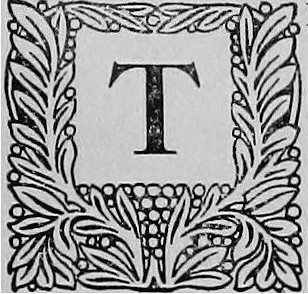
The mountain effects as you near Moukden, are every day finer. The august abysses and the tremendous onward sweep of the track, the seemingly impossible turns and cavernous leaps are all indescribable!
As you near the city of Moukden you see a saddle-shaped height to which the contending armies of the last war climbed and fought.
On one height you also see a shaft commemorative of the Japanese dead. All is prophetic of what is beyond.
Moukden is at the heart of China with Port Arthur and Harbin about equally distant. A strongly fortified place, a strategic point of China life and politics and of a value well known to her friends and her enemies!
Pekin is but two days away and the stone wall of wonderful fame but twenty hours, and what means more than all to this traveler, we are but one night’s ride from Port Arthur, over a good road which is being double tracked and is to be furnished shortly with first class American cars!
Moukden is built on a vast plain and has a horizon line worthy of the plains of Dakota. A wall of truly Chinese dimensions encloses the traffic which goes on with the usual Chinese volubility. A wide and new boulevard is being made by the Japanese, running from the station to the ancient city. This has a modern look, but not so what passes along it! Such a motley array of human clothes and shapes!
It is indeed a Vanity Fair. The huge Manchurians with a “devil may care” air. The Japanese looking anxious and[Pg 18] uneasy at so much to be done.
The ox carts with strange passengers inside them! The jinrickshas with their Chinese runners with more “devil may care manners”! The street hucksters, the few Europeans and the rich natives with their coolies, the stir of one of the busiest cities of the East and one of the most original, that all makes Moukden!
The recruits are exercising out in front of the American consulate and raw they are, but quick, and the military steps are fast becoming familiar to them.
An ancient pagoda surely contemporary with David is on this street: this Parisian boulevard of Moukden, and much we wondered at its stone form of concrete and its top of bronze, a crescent and ball!
Around the unique buildings of the consulate extends the plain, by turns dusty or muddy, according to the season.
Our delight was the moonlight on the consulate! The court so imposing, with its grotesque animals and its Chinese queerness! The rare old Chinese windows and at evening time, the watchman “beating the fish,” sounding a rattle to warn away all intruders!
The especial beauty of a real oriental house and furnishings; this one, set in the heart of China, has as delightful a flavor as one may meet.
The tombs of the Emperors of the Manchu dynasty, the men rather, who founded the reigning house, are of fitting elaborateness. They too, like the palaces of Seoul, are falling to decay.
The one I went to see on a chilly autumn afternoon, was set in a park of considerable dimensions guarded by the ever faithful stone dogs. These faithful animals have kept[Pg 19] the palaces intact and the sleepers in their tombs for centuries!
We watched the old stern-faced tho not unkindly woods-men cutting the winter fodder in the over-grown grounds. They work while the emperors sleep and how much more impressive they are!
A huge gate as usual meets us at the entrance to the enclosure; indeed, two gates.
The tomb itself or rather the shrine before the tomb is approached by two stately avenues, where the dogs are relieved of their lonely watch by two horses, two dromedaries and two elephants!
In a pagoda we saw the mammoth sea horse and on his back the memorial tablet written in characters none but a scholar’s spectacles could decipher!
The gate with its marvelous locks, certainly antedating Pharoah, opens and we gaze at its ornaments of dragons’ heads, a sort of mask, as we enter, to the central court, where we look up at the walls and mount them to get the view and see the four corner towers of brilliant workmanship and colors.
Descending, we approach the central shrine by steps of very fine sculpture and artistic form and are told by our retinue of attendants that curiosity can go no farther nor veneration for that matter, as the key is lost!
The grave itself is beyond all this stone and wood arabesque; it is without the wall, a simple heap, or mound of earth!
“Dust to dust,” after all, poor old Manchurian warrior of long ago!
But as it is autumn in the park, we gathered the red[Pg 20] berries and the men ornamented the jinrickshas with them and we ride home across the plain in a glory of red that out lasts all. The sun is a perfect disk magnified by the perspective of the plain into a gigantic size, worthy of Manchuria, and there is the Japanese flag! May it bring better days to this land of toil and patience! That is the heart’s wish for this colossal country of Manchuria!
Over the mountains sky high, over the plains of Moukden, over more mountains, and you approach the city of Dalny. There seems a stupendous realization of Nature in it all, the scene is perfect. Dalny, to use a histrionic term again, is the “curtain raiser” of Port Arthur.
The war cloud seems still hovering over it. If you are accustomed to the birthplaces of national significance you feel it in the air. The place has a somber air. Built to be a pillar of Russia’s all conquering power, it was to pass in a few years in an awful avalanche of disaster to another!
Across these streets men fought their way and others fled in terror!
There are places where nothing would astonish you. No miracle but would seem possible, because a miracle has been. Such a place is Dalny. There are spots of our earth sanctified by the sublimest emotions possible to our human nature, above this mortal passing of days: such is Dalny! Such is Port Arthur!
At Waterloo, at the Plains of Marathon, on the battle fields where all our race rose in an hour to another epoch of its stupendous destiny, what can be said! What is not felt!
At the entrance of these streets you feel it is other ground, you tread softly for immortal valor is there before you. You[Pg 21] have thoughts of pride; a pride that wells as a gushing stream, to your heart. Yea, here men were conquerors, not over a mortal foe, but over Death and Self. The deadly enemies of men!
When there has been said this word to fate, “you cannot rob me,” then all the hearts of men leap to that height and we are for a moment deified. O glory to the heroes of that hour.
Russians or Japanese! All were in that sublime sense conquerors! All shall be forever victors, enshrined in our memory, where we worship the undying splendor of the soul!

Moon of harvests and of toil she slowly mounts the aged Chinese Sky,
A sky of fairness, alabaster, ivory, like an antique shrine
Of ancient lineage and proud, her charm mingled of the mellow mystery of joy and tears;
In glory young, though old in years.
Glories indeed have been, an emperor sleeps within a tomb
Forgotten with the sigh, men breathed in his domain,
Nature and life rebuilt from death to radiant dreams,
Who notes the Past, as tolls the silver chime new hours?
Night speaks and light still streams;
Around her future like her rays, is mystery,
But as days die, new days begin, of history far mightier:
Great light appears across Time’s pageant, lighting to grander victory;
Victory deathless as moonbeams, and Love builds temples through all glooms.
[Pg 22]
[Pg 23]
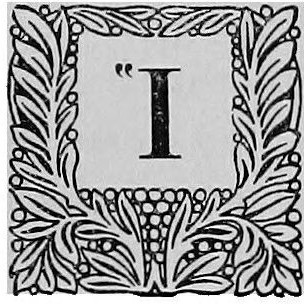
“In the increased enthusiasm of Japan in her ardent effort to strengthen her position in the world, by basing her international conduct upon the fairest and best tried principles of human progress, the effort is not free from occasional errors, but the large issue grows clear in Japan’s mind.”
The force of such words as these in Mr. Asakawa’s book “Russo-Japanese Conflict,” I feel as a traveller over four thousand miles of railroad controlled by Japan, from Yokohama to Port Arthur. If Japan is the country of loveliness par excellence, and Korea ranking with Greece and Montenegro, in the dramatic and picturesque, Manchuria is the majestic climax to both! Antoken, two days ride from Seoul, is the drop curtain painted in strokes of impressionism, as wonderful an introduction as the heart could wish to the farther grandeur of Asia. The Yalu has vast perspectives in its reaches into the heart of the land and moves one as do all great rivers, as the Neva, the Thames, commercially stupendous, as well as wide and deep. It seems a colossal boundary separating Korea from China, but in this respect it fails of its purpose since Japan has crossed it! The conflict which began near the gates of Pyongyang grows here more intense in retrospect and you see, still much as they were used, the sand bags and the remains of the fortifications. Sitting in a box car, with about twenty Japanese and Manchurians, we watched the unfolding of the landscape of China at our leisure.[Pg 24] Here for the first time in our four years of the Orient we saw the horse doing his proper work as we see him in Europe and America. They were drawing the heavy vans as at home laden with harvest.
Antoken is a wild, unkempt town sprawling out in many directions, and is being revolutionized by hard labor, as fast as toil, oriental toil, can revolutionize it. The gaunt crags, the excavated cliffs, make it stern in aspect and rather alarm one as to what may lie beyond. The road seems a toy, but your admiration increases with the square of the distance, as you wind on into the first “divide” on the edge of precipices and over chasms for five hours of each day, through scenery only the passes of the Alps or the Rockies can equal, and although I have travelled through both, I think in certain aspects this trip rivals either. The gauge is to be widened in two years and the distance shortened. I was the guest on my return of the engineer in his private car, so I had the pleasure of admiring the fruit of his brain with the man who had conceived it. At the little mountain station where we passed the night and which is provided with a good Japanese hotel, I was told that here will be the centre of a health resort, and of course the game is all any sportsman can desire. At this station we met a French engineer, on his return to Paris from Tonkin, and his wit and interest in all he saw did much to enliven the stay. His grey hairs had not dimmed his delight in the superb panoramas of Nature, and his enthusiasm was added to our own. These heights covered with the rich hues of autumn are in fine contrast to the treeless, improvident mountains of Korea!
I have regretted not being able to accept an invitation[Pg 25] to visit the American mines in Korea, but as it meant a trip in an ox cart I felt with Manchuria before me I had all I could have the heroism for. These mountains of Manchuria are supposed to be unfit for mining. The first farmyards in our home sense begin, soon out of Antoken, with the picturesque confusion of the autumn fruits. The soft greens of the intervals remind us of the country outside of Paris in spring. The cows and pigs are everywhere and in spite of the swineherds, who reminded us of our Spanish reading and the story of the “Prodigal Son” most vividly, they do get in the way of the slowly moving train. One little black fellow had his last race and fell, as so much rustic valor has before him, before the wheels we call progress, or Juggernaut according to our mood. One old swineherd in tatters came to the car door. Never off the stage have I seen a character so like the quaint creations of Shakespeare’s dramas. We made him happier with a few persimmons and a few coins, realizing from his extra crimson nose, that he was indeed in “a far country.” Now we were as the days wore on climbing ridges, now descending into abysses, every moment full of awe and of pleasure. Along one of the slopes I saw a letter carrier with just that easy lope he has on Broadway: so far gone that humanizes the letter! Caves, caverns, stupendous effects at every turn, on we climb. The mists on the heights in early morning are most exquisite. We pass military posts and one where there are rich coal mines. Being the only European on the train, and a woman, we are the “chief animal of the show.” We afford great amusement to the sightseers of Manchuria. Huge woods, men cutting logs, or at their arduous toil, it is[Pg 26] all reciprocated and we part the best of friends, the sturdy mountaineers and the woman, strange indeed. They are, in their uncouth way, chivalrous, and as chivalry is dying out in every country we may yet have to seek it alone in Manchuria!
At one stopping place, I was attracted by a shrine, of which you see so many, and as we had an hour’s wait, went to investigate. I fell in with the native kindness and was asked in with the greatest show of hospitality to see the interior. It was of course a farm house! How bare! There was the raised platform where, as in Russia, the family slept. All was blackened with smoke and all, including the family, needed a lot of water to bring them to the original color, but the children were very bright under their coat of dirt and very graceful, in a way far more attractive than most civilized mannikins. The advent of a foreigner made an event in the village annals and we soon had quite an audience of the neighbors. It took us back again to days of the One who went about doing good. I did not see a church spire from Antoken to Dalny; am told that there are Catholic missions and a cathedral in Moukden. The villages are all inclosed in mud walls and are compact and occasionally one sees a temple much the worse for the “tooth of time.”

[Pg 28]
[Pg 29]
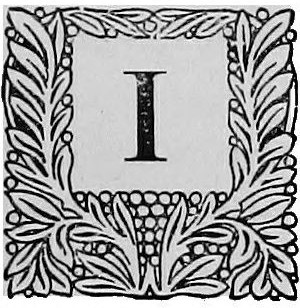
If you should fall asleep over a volume of the “Arabian Nights” as I have done many times in childhood and should awaken in Seoul, you would not find the transition in the least startling.
There is no city which could better fit in its glowing pages. Its coloring is as fantastic as are the episodes of the “thousand and one nights,” and to be accurate when therein describing its manifold glories, as I saw them, is to me impossible.
The editor of one of the very spicy journals which keep the Japanese busy asked me to give my impressions and when I did, said they were far and away too poetical and too imaginative for a daily paper, but they did not approach the reality; not by half!
There are two railway stations in Seoul and they are modern and very brisk in their air as we whirled into the second one late at night after a day’s ride in this wonderland of amber and gold mountains. I was too sleepy to do aught but fall into the comfortable bed of the “Astor House,” one of the best kept hotels in the Orient if you refer to the cuisine.
The next morning I awoke to find myself up under the shadow of a huge Chinese wall and beyond were fascinating towers and spires and distant flag poles of consulates and not many hours were lost before we took a Sunday morning stroll uphill and thru gigantic gates flashing with mural paintings of dragons and wild impressionistic[Pg 30] colors and weird symbolism, and found ourselves in front of a Russian church where the bells were ringing. We entered to the strains of that Slavic harmony which allures as no other and there we found blond priests, with long hair, worn in the same way as in the old Greek paintings and the profile of the angelic Northern saint type; it was a strange paradox to be in this chapel which represented a power now a removed obstacle to Japanese dominion, and see its worshipers calmly allowed to go on singing as of old. “One day they will come singing back again,” said a bright young American observer. All Korea has two influences very marked in its civilization, Arabic and Chinese, and a still more unique aspect of a Grecian tradition. It is all three and Indian above all three!
There is something of the wild free stride of all mountain peoples in their walk as you watch them in their flowing white robes and pot hats along the highroads and there is a wild glance in the eyes of the men not fierce, but the glance of some gentle animal untamed. The women, as all know, are the household drudges and are completely under the thumb of the male element, having neither name nor station apart from these very self-important masters.
They are kept in rich houses quite as in Turkey and they wear a silk mantle over their faces when in the street. You can see their large wondering furtive eyes looking out as you pass from station to station, where the dapper Japanese officials keep them in check.
They wear the most delicious shoes in the world, these same shy sisters; they are Turkish and turned up slightly at the toes and are silk besides, and very dainty in shade.[Pg 31] The upper class wear this flowing garment and the mantle of white silk in the street and the middle class the green mantle.
The poorest class, as is so often the case, gives the most picturesque tone to the city streets and we have had our breath quite taken away by meeting some woman, whose fancy ran a riot of color which would have eclipsed Turner himself!
I was invited to an evening entertainment at one of the hospitals, where the girls were in their house costume, and it consists of a bolero jacket and baggy trowsers, or divided skirt, it appeared to be. Many of the girls were pretty and as animated as one could wish. A debate was held and for diplomatic reasons I will not give the subject, but it was as full of fire as a Greek patriot’s and carried on amid the roars of laughter a school girl’s performance usually meets with.
One of the faces of the nurses was so beautiful and so pathetic I could not help remarking on its sublimity and my chief hostess told me a little of its tragedy.
The face was minus a nose, which a jealous husband in a moment of frenzy cut off.
The woman is a christian and the meek glory of her face will remain one of the memories of a lifetime.
No Madonna I ever saw in Europe equals it for sweetness.
Another inmate of this hospital, so admirably bringing medical aid and training to Korean women, was a little girl without arms or legs, but still smiling and happy!
All the world has heard of the great wave of Christianity which swept over Korea in these last years and the[Pg 32] glory of it belongs to the rare, very rare men and women, who are there; men and women talented in letters as in religious devotion and their fame is great, such as Dr. James Gale and others.
But oh, the streets of Seoul! Wander up on the citadel and gaze from its ramparts down on the palace gardens, the new palace where you can of a morning see the Emperor ride forth to visit his mother’s tomb or go to meet a distinguished guest as we saw him the morning the Crown Prince of Japan came, when the brilliant city was decorated with the magic talent of those past masters of scenic effect, the Japanese.
By one of the arches we saw the most unique spectacle as the Emperor and suite and the two young princes side by side swept on in that silent awe of Oriental homage, so unlike our own.
We saw Togo and Ito and the others who have made the most brilliant history of modern times, Togo laughing like a school boy, at all the parade, which without him would never have been. We wondered if thru his modest head any such thoughts passed!
Flags of Korea and Japan were in every possible nook and corner and arches of pine so solid in their construction that they did not look paltry beside the superb wall, which girts the whole city and with true Chinese irony runs up the hills and towards the sky and where the wondrous Korean mountains stand bare, bleak and awful.
Koreans have cut all timber from their peaks and left them like their kingdom exposed from shiftlessness, a prey: now Japan is to make them again, to wave with Nature’s fairest plumes the giants of the forest.
[Pg 33]
These gaunt rocks made, however, a truly majestic and fantastic background to the oriental brilliancy of the streets with their rows on rows of open shops, full of tempting wares such as we cannot often find.
You can buy in Seoul furniture that is a marvel of luxury and usefulness and the mother of pearl inlaid ornaments and the wonderful brass decorated articles are almost an enthrallment. The American Consulate in Seoul is as rich in its interior beauty of decoration, as in its hospitality. Its mistress is one of the most lovely women of our land, or of any land. There we met the forceful Englishwoman who had tutored the Crown Prince, until he left for Japan; a charming personality whose reminiscences would fill volumes of delightful romance, as she has been in the “inner circle” for years and that, indeed, in a country as full of brilliant scenes and of thrilling events as a drama of the most Victor Hugan sort.
You can buy amber and silk and the wonder of Eastern fabrication and you can exhaust your prose and your purse and your vocabulary over it both, in admiration and exasperation.
Seoul is in part modern, that is, a little modern, and it has a street car line very much like we used to have in Manila in the good old days “before de war.”
I always took it with the thrilling sense of not knowing where I was to land and indeed, altho Seoul looks easy to the traveler, you can get lost as quickly as in Boston. I was lost several times, but found myself again just where I started.
After dark the streets are lighted with huge Chinese lanterns and small Korean lanterns which are carried in the[Pg 34] hands and you can follow your neighbor, as you do very gratefully, home this way.
Seoul has a new boulevard since the Japanese occupation and the streets are, oh, marvel of marvels, being cleaned!
Koreans would never have thought of that in all their years of philosophical wandering into the unseen, where they like so much to go!
My trip to Seoul proved to be of more importance than I anticipated, as I had a hole in one of the principal streets filled up, to my great astonishment, again proving that “where there is a will there is a way.” It had threatened for some time to break many hundreds of legs, which passed that way every hour of the day and Stygian night!
Seoul lies in a cup of gigantic hills and it must be not a little like Jerusalem, in situation a “joy of the whole earth.” It has superb moonlight nights and radiant days and it is as majestic and dreamy and sad and glorious as a Greek tragedy.
If you go into the parks of the two ancient palaces and wander for hours and hear the birds sing and watch the tall fading on castle walls and the glory that was Seoul and the grandeur that was Korea and watch thru the trees, arches and bridges of lovely shape and the pagodas richly tinted, where rested the lovely forms of long ago and see the art and the dead, forgotten beauty of an age when beauty was enough, when an emperor sued within those bowers and the days were long and careless and the great lotus flowers now on their stems, as then lulled to sleep all of man’s longings, why you will have to literally tear yourself away, not to want to drop to sleep never to wake[Pg 35] up, as you did over the book which told it all, how they lived and dreamed and loved and hated in—Seoul, yes, so long ago when there was a king who had a son beautiful and good and a daughter as fair as the moon, you remember!
[Pg 36]
[Pg 37]

The question of the relations between the Koreans and the Japanese in Korea is a delicate one—one which requires an insight into past causes and present issues somewhat beyond that of a casual observer.
It is a question which finds its parallel in the relations of the Filipinos to the Americans in the Philippine Islands. Taking into consideration some of the minor differences, it is strikingly the same.
Unwillingly, by the fortunes of war, both these helpless people, people loving very little the “strenuous life” and enjoying ease with little, far more than much without it, are being forced to arouse themselves to action along new paths into a complex existence to which their child-like and primitive needs do not call them. They are both more given to reflection than action, and to theory rather than practice. The same pride of those who take refuge in dreams is found in both, but in the case of the Korean it is even harder to obliterate the past tendencies, as they are not anxious to change even when at slight cost to themselves. But here we must make a second observation,—that along the normal and intellectual paths they do desire improvement. They will sacrifice much to educate their children, and will go to any privation to get an education. For example, the nurses in training in the Seoul hospital, the “Po Ku Nyo Koan,” take six years of study and pay for tuition, and do it gladly and with[Pg 38] enthusiasm to obtain their diplomas. I saw several of these young ladies who would do credit to Johns Hopkins, so noble and self-poised did they appear. But stubborn they most surely are, and refractory to those new forms of life which mean other customs and other laws. The missionaries find them open to spiritual truth and tractable to the practice of it in their lives.
Both essentially Oriental and gentle when left to themselves, the Filipino and the Korean become sullen, and even fierce when forced against their will.
Both Americans and Spaniards, as a Spanish gentleman said to me, become heady and inflated with their own importance as soon as they “round Corregidor.” The least desirable traits come into focus when vulgar people are in the foreground. The Japanese have suffered somewhat by crossing the Tsushima Straits. Insolence and a swagger of “we are the people” we fancied we had left behind us in the “Pearl of the Orient,” and which is slowly passing away, however, is recognizable at a glance in Korea. A jinrikisha man, who seems to be a “thorn in the flesh” of Yokohama, becomes a festering sore in Korea; he runs over unwary men and women without a grimace, and bullies the rider into double fare with the air of a bandit.
The meddling “in other men’s business,” conspicuous also where ignorance and lawlessness come into play, as in the Philippines and Korea, is also characteristic. There is no bound to the impertinence of those who feel like the bad boy of the nursery that the governess will never dare tell, for she would get the worst of it if she did. Fair play is not conspicuous in Korea, nor always in the Philippines.[Pg 39] Great complaint is made by foreigners in Korea as to the wholesale disregard of property rights, the absolute impossibility of getting justice before the law. Fortunately the parallel stops here; we have Filipino judges who enjoy nothing better than sending an American up for a long term! I hope the time is not far distant when a Korean judge can enjoy the same ironical pleasure. Of course the greatest difficulty lies in this adjusting of ignorance to another ignorance in the lower classes, the ignorance of both being absolutely impenetrable. The educated Japanese recognize this and acknowledge their inability to cope with it at times. Occasionally this takes a tragic aspect, as when in working on the telegraph wires in the streets of Seoul they warned to no purpose over and over again a poor Korean, to whom electricity and its deadly power was as unknown a quantity as a Sanskrit root to a London fishwife, and at last they hit him a blow, and he fell—dead!
But force is always the weapon of men who have power over others and none over themselves, whether in Bombay, Manila or Seoul. But that the patience of English and American and Japanese is often tried to the uttermost is also true, doubtless. “Patience conquers all things”; this saying of Saint Theresa is needed by them all; and by the Filipino and Korean, above all. In conversation with foreigners, with Japanese and with Koreans, you feel this absolutely.
A Korean boy said to me pitifully, “Oh, they do not understand,” and a very astute and able man of prominence in finance in Seoul, a Japanese, acknowledged the same difficulty of harmonizing such divergent elements,[Pg 40] meaning exactly what the boy could not express. Some of the foreigners are strongly influenced by their hearts in favor of the Koreans, citing incidents of their ill-treatment by the coolies and the merchants. Others, relying on their heads, say, “No, Japan is doing as well as under the circumstances is possible with a delicate, obstinate, inflexible people, who do not wish to develop in the modern sense.” As to the Japanese soldiers and their behavior, I heard only praise, which is certainly, considering the opportunity they have to be otherwise, admirable.
The Korean has by no means the courtesy towards strangers of the Japanese, but it is said that once you show yourself their friend they go further in their cordiality and are far more unselfish in their devotion.
The less attractive qualities of the Koreans have been greatly overdrawn. They are kindly and attractive, the women especially so, even winsome, graceful, and possessing that dignity and poise, partly characteristic of the British Indian and partly of the Mohammedan. They are sticklers for tradition and punctilious in etiquette, and like such people usually are rather more anxious for the “letter” than the “spirit.” Sensitive to the feelings of a stranger as the Japanese are, they certainly are not. The prosperity of Korea is tempting to the avaricious Japanese, and they have been guilty of such transactions as are some of the monopolies of America, crushing to the wall the less clever. It is an old story; Japan can show England and America nothing new in greed. We have exhausted the repertoire!
Seoul is one of the most enchanting cities in the world; its situation is marvelous, its picturesqueness only Constantinople[Pg 41] can rival.
Korea is a land of stupendous beauty and attractiveness, the kingdom of toil, and it is to this they are looking. To the onward marching lines of men who see the future, Korea and Manchuria are the stepping stones. The wide fields extend in every direction, the hills “rejoice on every side.” Japan marches her soldiers at every station, law and order go with her, and out of chaos, Asiatic chaos, she will bring—who that sees her at work can doubt—civilization in the modern sense.

[Pg 42]
[Pg 43]
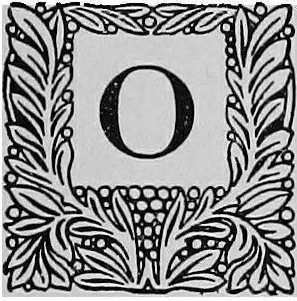
One of the most interesting experiences of my stay in Japan was my visit to the parliament, where I was privileged to have as a guide the mayor of Tokyo, Mr. Ozaki, a man who has had a seat in that body every year since it has had its existence.
The buildings are not in the least imposing. They show the same paradoxical simplicity which we find in so much of this most stately people’s ways.
Over the president’s desk hang eight portraits in oil and on a raised platform under them a group of distinguished workingmen, whom I took to be in part officials and visitors.
Our seat in the diplomatic gallery was directly opposite that of the president, Mr. Sugita, a most distinguished appearing man who looked not a little like our late John Hay. The vice president, Mr. Minsura, sat by the president’s side, a serious man of sedate face.
The chief secretary is Mr. Hayashida.
It was a most curious thing to look about the room and to contrast the individualities with those scenes we had watched in Congress, the German reichstag, and in Paris in the senate chamber.
Mayor Ozaki has the distinction of being one of the three best speakers in the parliament, and his rare penetration, wide travel, and far-seeing intellect, as well as his wide knowledge of affairs in a practical sense, furnish[Pg 44] him splendid equipment in sustaining the oratorical eminence he has gained. The speakers on this afternoon were many and, judging from the rapid firing from the seats and the frequent laughter, they were both witty and well directed. The members showed every age from grey hair to the trim dapper young thirty with its brocade waist coat. Every style of Japanese dress of old feudal days, which is a most dignified and becoming garment, to the latest work of the European tailor, was in evidence.
The voices were for the most part the well-bred modulated ones of the upper class Japanese, but some were impassioned and some were silvery and persuasive.
In front of the president’s desk stand the different members expressing their views in as many fashions as there are men. Groups of men stood about laughing and talking as is usual at such places and in the lobbies there was the usual passing and doubtless buttonholing. On every hand might be seen deep eyes of astute glance and the still deeper eyes of a far-seeing statesmanship.
The sitting lasted till four, and in times of eager debate when much is at stake, they sometimes do not rise till nine p.m. This making of laws is a noble profession, but it has its humdrum side as do all professions, and men seek to escape from this tedious side in different ways characteristic of themselves.
There is a restaurant on the ground, indeed, two of them, and we dined at one with his excellency and listened to the brilliant conversation which he added as a sauce to the food. Very appetizing food, by the way!
In Mr. Ozaki, Tokyo has a very unique mayor, a man with as many sided an existence as his city! “Self made,”[Pg 45] as he proudly said, he has been a public man all his life and yet likes the quiet of his country life and the family quite as much as the most humble man of the city. A great reader of men and of events, he is a democrat to the backbone and has a manner simple as a child and a mind as keen as one of the damioes swords. He was once exiled from his city as a dangerous character, “for I am always in the opposition,” he laughingly said, “always a fighter,” and then he told us of the first three positions he held, from which he resigned in one, two and three months respectively. He has a dash of dare devil still, this excessively quiet, self-contained man, but years, years how they take the fight out of the bravest! We learned from him of the great undertakings which he as mayor has in view: the building of a harbor for Tokyo, the new sewerage, the 10,000,000 yens to invest for the coming exposition and the other things with figures of something like one hundred million yens. It reminded us of hearing President Harper talk of laying out Mr. Rockefeller’s millions. Such a juggler in figures he seemed.
The Ginza has been widened and one of the finest systems of water works in the world just terminated. This alone would make the administration famous. Tokyo elects her mayor every six years, and this mayor has served five only to begin to learn he claims, the duties of his office.
Mayor Ozaki in his younger days was a journalist and he has an able pen. The municipality has in its care a very interesting “Alms House,” of which we may write later. It is, with other of her institutions, a most creditable one.
Japan has the quick eye that sees and puts the right man[Pg 46] in the right place, and certainly the choice of this man was admirable for the city.
Tokyo is now expecting to buy the electric roads and make out of them something with which to carry on these gigantic schemes of improvement.
The city of Tokyo is in the hands of fifteen aldermen, a council over which the mayor is president, in addition to which is a legislative body of sixty members, elected by the citizens. The right to vote is the qualification of the tax payer and is in fact universal suffrage. This makes the city more an independent or free institution than the country, as the right to sit in parliament is only received from votes held by property owners.
The mayor is elected by the municipal assembly; there is no ceremony in the inauguration of mayor, not even a practical oath. All the members of the assembly must be citizens of Tokyo, but the mayor need not be. When he is elected mayor, the right of citizenship is conferred upon him.
All the electric car system which is now in the hands of one company, is soon to be owned by the city. It is at this present time being considered by the Diet. The city in this way hopes to meet the enormous expenses which are confronting it in the way of harbor improvement, street widening and new sewerage, all of which will cost something like 100,000,000 yen. The new water works are almost completed. The water comes from the river Fama, about fifty or sixty miles out of the city, and is a masterly piece of engineering. It will provide Tokyo with a water system second to none. Of it the present mayor is justly proud.
[Pg 47]
Tokyo is increasing in population at about the same rate as Chicago, that is, about 100,000 per year. Labor troubles have not as yet become a serious thing in Tokyo, but the prescient gaze of the administration foresees that the day is not far distant when they may become so. The municipality was only established about ten years ago and was before that under the rule of a governor. The office of governor is still a relic of the feudal times and the Governor still has some prerogatives which remain from the ancient and somewhat archaic institution.
The preparation for the coming Exposition is the most serious thing before the city now. There has been appropriated about 10,000,000 yen.
“After the Exposition we hope to have the Aoyama Parade ground as a permanent park, and the construction for this gigantic affair involves the closest attention from now on,” said His Excellency. A huge building is projected, which will become permanent and will adorn Shiba park. The model which we saw is very imposing indeed, and is the work of the city engineer. It is rather of Roman style of architecture and is massive and admirably proportioned.

[Pg 48]
[Pg 49]
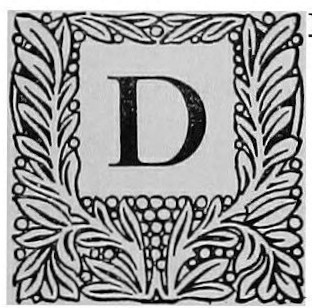
Dr. Hirai, Director of the Government Railway Bureau, graduated in the Van Rensselaer Polytechnic Institute just after the exhibition in Philadelphia in 1878, and on graduating was employed in the Mississippi River Commission by the United States Government, and did not return to Japan till 1882.
His pioneer railway service was in the Hokkaido, on the line which was built by Col. J. U. Crawford, an American, and run on purely American plans and methods. It has changed since, as after Dr. Hirai left the engineer introduced English customs, but retained the American cars.
“In my day,” said Dr. Hirai, “the New York Central and the Pennsylvania were the leading roads in America. I hope to see myself what thirty years have brought about, on my trip to that country next year. I had intended visiting Europe and America during the war time, but was prevented on that account from travelling. On my return I shall have seen and investigated modern railroading as it actually is in America and Europe. What I shall see will naturally bring benefit to my system.”
“What do you think of American railroad men, Dr. Hirai?” we asked.
“I think they are the greatest men that you have in any line. We are working at this moment for the amalgamation of seventeen private railroads and are reducing them to the same standard of rates, fares, and working staff. Our railroad system is just a little over 45,000 miles, which[Pg 50] does not show very large, but its significance is in the fact that it includes all the main lines of this Empire and is therefore important. It includes the lines in the Hokkaido, Kyushiu, all of the main island, and Shikoku, one third of which belonged before to the Government, the rest having been acquired since 1906-07. The method by which these seventeen railroads have been acquired is based on the calculation that the stockholders will receive Government bonds bearing interest at the rate of 5 per cent., equal to the average of the dividend they have been receiving during the three years previous to the time of nationalization. When the railroad has been paying less on the capital than that, the amount of the bonds to be paid for the railroad is to be agreed upon between the Government, and the representatives of the stockholders. The whole amount of bonds to be issued for nationalization will be nearly Y450,000,000, or Y500,000,000, which we calculate will be paid off, interest and principal, in 60 years. The actual result since acquiring the railways is better than had been anticipated. Rates for goods and fares for passengers have been reduced to a single standard. The reduction on some lines has been more than 30 per cent., but still on the whole our receipts are about 10 per cent. on fares and 20 per cent. on freight more than the receipts of the previous year. The results are, therefore, most gratifying. The total receipts for the fiscal year ending the 31st of March this year will, I think, approximate Y70,000,000; the net receipts are about 32 to 35 millions. The actual net receipts for nine months to the end of last December are a little over Y28,000,000. This is a showing which speaks for itself.
“The most marked results of nationalization of our railroads[Pg 51] is seen in the Hokkaido, where the best part of the railway was under the control of the Hokkaido Colliery and Railway Company. Naturally this company transported their coal in preference to all other freight, and the development of paper mills and other manufactures was slow. Since the Government has taken over the railway, no preference is given to any particular freight, and in consequence the development of other industries is facilitated.
“The steel works at Wakamatsu are supplying the army and navy, so we are short of materials from this source, but we obtain the greater part of our rails from them. We are building our cars in our own shops and in three private shops, but we import our locomotives from foreign countries, and you see English, German and American locomotives on our road. The most economical engines so far in use we find to be English. We hope to introduce greater ease and luxury in our cars every year. We are now exporting wood for ties and sleepers to America. Our first aim is for cheap and quick transportation of goods. Heretofore our receipts have been mostly from passengers, over 70 per cent., but of late we are giving more facilities to freight. We expect to build a central station in Tokyo, beginning the work this year, and Shimbashi will be like an old horse which in pride has once drawn his master’s carriage, but is later relegated to a dray, for it will be used for goods alone. We expect to connect the elevated line we are building now to Uyeno and Ochanomidzu. The plan of the new central station is already complete. It will be located in Marunouchi and will be a thoroughly modern station costing about Y2,000,000. It will be completed in time for the exposition, and we expect to have a station hotel in connection with[Pg 52] it, after the plan of the Canadian Pacific hotels. But, when it is all finished, we shall have, like the man in the scripture, to pull down and build bigger, so fast does the tide and onward sweep of modern life outreach even the large projects of man’s brain. We have something like 70,000 employes, a good standing army, and our Society for the relief of the injured and disabled has on its list 50,000 members; this provides for medical treatment and care for those laid aside in any way. It is a society in which the railroad and the men co-operate. The men pay in every month 3 per cent. of their wages, and the government 2 per cent., so that 5 per cent. of the income of all wages is appropriated for this relief fund. The officers of the road get a pension after 15 years’ service amounting to one quarter of their salary. We have to supply the staff of the Korean, Manchurian and Formosan times, who are men trained with us.
“During the war we sent 15,000 men to work the military lines in Manchuria and Korea. A Railway School is situated near Uyeno Station in Tokyo, where the course is preliminary. After graduation the men come to us and work up. For high grades we employ university graduates or those from high commercial schools. The most urgent work we have on hand in the coming year is the extension of station facilities, doubling of tracks, extension of repairing shops for the existing lines, for which we have an estimate of eight millions for the coming year. In the line of new construction, we have an estimate of about 25 millions yearly extending over twelve years, which will add about two thousand miles to our railway when completed.”
Dr. Hirai speaks the English of a generation gone, with the clear cut pronunciation of another age when men and[Pg 53] women had time to do things well, and as he speaks English, so he stands at the head of one of the great railroads of the world, with the gentle suavity and calm reflective face of a scholar, not a man of affairs, with a serene self-possession which is the unmistakable mark of genius combined with self-mastery. He is more like the great Dr. Charcot than any man I ever met, and I remembered on coming home that in Dr. Charcot’s Paris house was placed, in his vast library, a statue of Buddha.

[Pg 54]
[Pg 55]
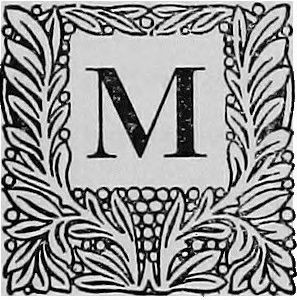
Madame Shimoda is one of those rare beings, who have the singular fortune to have not only fame, but what is far more to be coveted, a place, in the hearts of thousands of her countrymen and women.
Hardly any one in Tokyo, who reads at all, but could guide you to the little wooden house, on the hill, one of a million homes of her city, where this virile and delicate woman lives, surrounded by the care of relatives and friends, who it is easy to see give her, not only care, but love.
Born in a feudal castle in the picturesque country of the Japan mountain region, with the country spirit still in her, which the life for many years in the palace of Tokyo could not destroy, that spirit you feel in the touch of her diminutive hand, in the glance of her powerful eyes, where dwells unquenched the freshness of free spaces.
Before she was twenty she was a reader to Her Majesty the Empress and began the severe training of court etiquette, with its demands, more than those of a soldier for self-control, yet even after years of such experience and the still more severe drill as a teacher of young ladies she has as charming a naturalness as a girl, so great is the gift of the “kind old Nurse” Nature.
These men and women of Japan, who have crossed the half century line, are all of them, more or less, the inheritors of the chivalry of the ages gone by, and of all those ideas which Japan once held as absolutely necessary to the making[Pg 56] of a lady or a gentleman.
They tell us with a soft resigned sigh, that those ideals are passing away before the inroads of western civilization, and who can not regret it?
A volume of this little lady’s work with her round, generous hand-writing, is one of my treasures, as she stands first among the “singing birds” among the women of her land.
Her tastes are as varied as her life, with always that passionate love of nature in the foreground.
The heroic, as is natural in a Japanese woman, comes next, and the late war comes often into the short simple lines, where self-poise is again so marked.
Her fondness for youth and the sentiments of youth come into play on every other page.
I had spent a number of hours in the school which is her greatest monument, the “Peeress school,” where the daughters of the nobility are educated, and found there a duplicate of a first class European institution, from the kindergarten to the graduating class.
I had listened to the eloquence of the teachers as they spoke of the French Revolution, and watched the faces of the English class, as they went over the ever imperial verses of Tennyson.
In those pretty, demure eyes, there was just the passion for the “good, the true and beautiful,” which all fine youth has, the same we know so well, before the Dawn has left them.
We passed a group in the hall and there was the daughter of the greatest admiral of modern times, Miss Togo!
We saw them in the cooking school and heard their bursts[Pg 57] of laughter as they made the interesting and doubtless indigestible dishes they were soon to partake of.
From the Auditorium to the garden, where the children play and make those queer shapes and forms in the sand which latter are enlarged in the vaster designs of manhood and womanhood, we found everywhere the mark of this woman, her care and her genius.
On one Sunday, we were invited to her house, and a very bright Yokohama girl, who spoke Japanese fluently, was our enthusiastic companion to the home of the first teacher and first poetess of the land.
I was amused as we sat and she talked for an hour in the quiet soft toned parlor of the higher education of the women of her land, to see how her glance would wander from my pencil to the face of the young girl, and of how she would interrupt her most serious remarks of history, which she has at her finger tips, of philosophy, bred in her bones, of the highest ethics of life, when she would cast one of those bewitching smiles on the girl as she pressed her to take more sweets. Life is ever the master passion of all such souls and they live only in to-day. Higher education is not new, but like all great movements, this of Japan began long, long ago, and once women held the place of almost the equal of their lords, but the strange story of reaction and retrogression, which marks the advance of the East, came in to disfigure the wonderful march of the thought life of women.
Madame Shimoda is a pioneer in her work, and to-day thousands of modern Japanese women rise up to call her blessed.
She was left a widow after a very brief married life and[Pg 58] then all her pent up love and devotion went out to her sex.
She has travelled extensively in Europe and America, and with that master power that all Japanese seem to have, she has taken much of the good, and left the bad of the West.
The great need of physical culture for the future mothers of Japan was what appealed to her most strongly and this has been the first note in her educational scheme.
We had sought for the motto which gives the keynote to the social life of a Japanese home, and in the house of Viscount Kaneko we had found it to be: “Wealth and rank are but a fleeting show, the merit is the man.” Here it was, as we might have known: “Duty First.”
What would one expect of a woman who had spent her middle life in educating the upper classes of her people, that she would want to rest? Oh, no! for the remaining years she is to devote herself just as earnestly to the educating of middle and lower class Japanese women.
This frail but purposeful woman had fire in her eyes as she spoke of the future, a future which to such as she must only mean vaster and vaster horizons and more radiant conquests.

[Pg 60]
[Pg 61]

If you walk from Hibiya Park between two imposing public buildings, up the broad avenue to the top of the hill, you will come to the high wall which encloses the Peeress’ School, with the court, a fine entrance space, with porter’s lodge and a porte cochere of Gothic arches, and the whole a good bit of English architecture, with wide door and a lofty hall. Opposite you as you enter is the refectory, with its low tables and the plain and substantial effect of age and use. Two pretty portresses will meet you at the door, with their eyes full of fun, as all boarding-school maids have, as they are the secret ambassadors of much mischief and are initiates of that occult society of fun. Their demure manners, assumed for the occasion, do not blind you to their roguery, for you have been a boarding-school girl long ago.
The instructor in English is as courteous as a guide as he is clever in the use of your mother tongue, and you begin with a keen relish the tour of inspection.
The reception room is rather like the meeting room of a committee, for which purpose it is doubtless often used. Here the wise heads are doubtless laid together and those plans for the education of Japan’s future wives and mothers laid. Out of this room leads the Empress’ reception room, with the heavy damask curtains, the high ceilings and the empty walls where, on the two yearly visits, the gracious and “first woman of the land” receives the homage[Pg 62] of the director and his staff and gives in return the interest of all true women, be they high or low, in the education and welfare of their sex.
The school has three terms,—one week’s vacation in April, and more than two months in summer, and a short vacation at the New Year. About the end of October is the exhibition in physical exercises, and about the end of March that awe-inspiring epoch of graduation, when the high functionaries of State and the distinguished clientele of Tokyo come to see their girls step out of the schoolroom into the school of life—a moment mingled in every land and school with gaiety and pathos.
The children enter the kindergarten at the end of the toddling age, and the little lads and lassies sit side by side in their delightful rooms and make their first songs of life, as they end them, together, their little arms and hands making the first efforts at rhythm together, awkward movements full of grace. They pass at eight years to the primary department and begin the toilsome upward pull of real study, and here their ways part,—the boys for the Peers’ School and the ruder ways of masculine effort. From the primary course they enter at about the age of fourteen the “middle course,” and that is in grade substantially our High School. From this they can take post-graduate courses in special studies, such as the classics, music and other branches. The branches are technical departments, music, needlework and embroidery, and a thorough course in cooking. Of the painting we will speak later.
The Literary department must include courses in advanced Japanese classics and English and French literature. The Science department comprises a small laboratory, not[Pg 63] overstocked with apparatus, and a good class-room for experiments. This department has few devotees, as might be expected, and also mathematics, and there is “little Latin and less Greek” in the regular curriculum.
These sparkling-eyed young damsels take mostly to the gentler arts and the gentler paths of learning. Our first visit was to the painting department, as was fitting in a land which is above all things an amateur of art. Here some ten young girls were painting on silk the flowers and butterflies so dear to the Japanese heart. They were fifth-year students and were very clever. The first year’s work hung about on the walls. We looked for still-life subjects and casts, and were told we would find them later, as we did, and some good work in oil, and were told that animals and more ambitious subjects were attempted by these embryo Rosa Bonheurs. The work was about on a level technically, without being as original, as similar work of the same age at home.
The gong struck for the end of a forty-five minutes’ period as we left these rooms and the girls rushed out to the playground with all the excitement of such times at home. The playground is much too small. It had a tennis court where the girls were striking wildly at a tethered ball, an amusement they seemed much to enjoy. There is a fine gymnasium with the omnipresent piano, and here the marching and physical exercises are practised. The kindergarten department playground has piles of sand for the little folks, and they begin their engineering and their landscape gardening in the bright sunshine there. In the halls we saw two ping-pong tables, and certainly the physical side of the young ladies’ training is not neglected.[Pg 64] The auditorium is spacious, and here are held the overflow recitations occasionally. We saw a class in ethics file in, their faces alive with youth and happiness, a charming ethical picture! As we were passing one door a group of these eager beings emerged, and our guide informed us that the tall young lady was Admiral Togo’s daughter.
Four hours a week are given to foreign languages, and French or English may be selected. German is not taught to the girls. We were particularly entertained in the history class. The young ladies were as intent as their master, who told them in impassioned language of that impassioned epoch of the French revolution. “Danton and Robespierre,” how strange those names sounded so far away, mingled with the hurrying voice of the speaker! The revenge of the years on evil, how far-reaching! In the English class we heard some very creditable rendering of English verse by the girls, and the charm of Tennyson’s “Idylls of the King” lost nothing on those pretty lips. The Knight Sir Lancelot and the maid Elaine and all their chivalric woes and their exquisite love story was dainty enough in its new setting. We saw the cooking class at work and the little maids frying fish and preparing the lunch that was to be served at the long table in the airy dining-room which opens into the garden. For myself I was willing to try the cooking, however indigestible, after seeing the cooks. The teacher was an old Japanese gentleman who was as cool, apparently, with these too many “cooks spoiling the broth” as a young chef would not be, patience being the supreme qualification for a cook, as for a Cabinet Minister.
We found the kindergarten department, after all, the most alluring, for the rooms here were more attractive and the[Pg 65] little pupils passingly dear. They sang so sweetly and played so charmingly in the wee garden and came running about us with all the abandonment of childhood and the laughter of fairies that we were captives to education at once.
If we could have one of those baby companions as a seat mate we would be willing to go over the whole course again, beset with the terrors of examinations and failure marks as it was.
The teachers of the Peeress’ School are specialists and have received the training of many lands. We had a cosy chat in the director’s study, and he amusingly informed us in very idiomatic English as a beginning “that as he had arrived only a day before us he did not know much more than we about the school.” This admission was certainly promising of great good to the school, as wisdom is not hasty in its judgments, nor rash in its methods.
Looking into that face which bears the beauty of refinement and culture to an eminent degree, as well as that soul light, without which all education is vain and all teachers worse than vain, we felt that in the hands of a man associated for more than twenty years with the education of the youth of Japan, Mr. Gentaro Matsumoto, the future of the Peeress’ School might be even brighter than its past.

[Pg 66]
[Pg 67]

The subject of this chapter is one of the forces,—which unobtrusively and unostentatiously is not only felt in Japan, but in the world. He is a world man. In order to pass into this category of world men, a great deal is required, and process is always of intense interest to humanity,—which from the lowest to the highest is aspiring to be felt.
Chosen to represent in the Great Exposition the country of which his proudest boast is to be a son, he combines those distinguished attainments, which a long past of services well rendered have given in turn, and is not only a fine example of Modern Japan at its present moment of leadership, but is also a man of the world,—moulded by the best scholarship of the last century, and while working to-day in the formation and perfecting of his own government, his thought has the catholicity of a statesman and embraces the interests of every land as well.
Born at an epoch when his country was just awakening to the modern struggle,—born out of the provincial life, which is always the best preparation for city life, because it is more serious, more profound, and more far-reaching in its thought than that of a metropolis, as it is more introspective; he came as a very young man to be the adopted foster son of our great republic, and with singular Oriental astuteness, read into its pages of history and life, its secrets of growth and progress, as well as its defects and limitations; he rose through all the grades of a city[Pg 68] public school, that unrivaled training for life, entered our proudest university, the synonym of culture, of the humanities of that aristocracy of thought which separates and differentiates men, far more than lineage,—and came out of it to mingle in the affairs of men, a democrat, progressive, man of action, incorporating in his ideals and work the best influences of the past, but an ardent lover of the future, a believer in better days and things, a belief which he has kept to this hour.
Kentaro Kaneko was born in Fukuoka, Chikuzen, Western Japan,—noted for its chivalry, its warriors, and also for its learning. Its Daimyo was Marquis Kurada, one of the greatest nobles of the land, the grandfather of the present Vice-President of the House, and this man took a special interest in Viscount Kaneko, and it was through his influence that as a boy he was sent to Tokyo to study, and later to Boston, where he began his education in the Boston public schools. From these schools be entered Harvard Law School and graduated, returning to his own country after eight years, and was soon appointed by Prince Ito Secretary of the State Council, and was in the next year appointed private secretary to Prime Minister Ito, and launched on the arduous labors of making the draft of Japan’s future Constitution.
He was married to the present Viscountess, the daughter of a governor of one of the Japanese provinces, and they have two daughters and a son. Viscountess Kaneko is exceptional in her graceful hospitality, a lover of home, and although she does not speak foreign languages, is said to be a brilliant conversationalist in her own, and is a real helpmate to her husband in his intellectual and social life,[Pg 69] devoted to children and to entertaining, she has won enthusiastic appreciation from her guests by her tact and kindness. She is interested in all the best modernism.
In a recent resume of his life, we gather these details:
“In 1890 he was elected as a member of the Institute of International Law and in 1892 attended its general meeting held in Switzerland. At the meetings, he advocated reforming the Treaties then in force between Japan and foreign powers and for abolishing extraterritoriality in Japan, and after much argument and pleading, he at last succeeded in getting the Institute to pass the resolution. In 1894 he was appointed the Vice Minister of Agriculture and Commerce; in 1898 became the Minister of Agriculture and Commerce in the Ito Ministry, and then resigned the portfolio together with Prime Minister Ito. In 1899 he went over to the United States, accepting an invitation from Harvard University, where the honorary title of Doctor of Laws was conferred on him. He was the first Japanese that received the title, and the reason for conferring this singular honor upon him was announced by President Eliot at the Commencement as follows:
“Kentaro Kaneko, Harvard Bachelor of Laws, formerly Chief Secretary of the Imperial House of Peers in Japan, and Vice-Minister and Minister of Agriculture and Commerce, Life member of this House of Peers, the type of those scholars of two Hemispheres through whom West would welcome East to share in the inheritance of Hebrew religion, Greek Art, Roman Law and Nineteenth Century Science.”
In 1900, he was created a Baron in recognition of his service. Before this time, he had organized with Prince Ito a political association named Seiyu-Kwai and was appointed[Pg 70] a member of the managing committee. When the Ito Cabinet was formed in 1900 he was appointed to the portfolio of the Minister of Justice. The next year, when the Ito Ministry resigned, he retired to a quiet life for a while. In 1904 on the declaration of war with Russia, the Viscount was ordered to proceed to the United States on a special mission and remained there for one year and a half. During that time he devoted himself to promote the best interests of his country and scarcely had a day’s rest, so that he was looked upon as uncommissioned ambassador; and it is said when the negotiation for peace was commenced at Portsmouth, he labored hard to secure a successful result, and had several interviews with President Roosevelt. In 1906 he was appointed a Privy Councillor and for his service during the war, decorated with the First Order of Merit and the Grand Cordon of the Rising Sun. In 1907, when the Order for the Organization of the Bureau of the Grand Exhibition of Japan, to be opened in 1912, was promulgated, he received the Imperial Order to be the Director of the Exhibition with all the offices and rank already conferred upon that function. In September, 1907, he was a Viscount for his service rendered for the cause of his country.
In one of our interviews with this man, whose souvenirs cover such an interesting period, we asked him for reminiscences, which he kindly gave in the genial and unstudied manner characteristic of his conversation.
“My souvenirs of England? Every day I used to go and sit in the house and listen to the debates in which Gladstone and his illustrious colleagues took part, this was in 1890, and I learned the usages from Sir Reginald Palgrave, who was the clerk of the house, the brother of the famous[Pg 71] Prof. Palgrave of Oxford. My friendship with Herbert Spencer was a connecting link from America, for I took a letter from Mr. John Fish to him, and sending him my card, we met the following day by his invitation. At once we talked on the constitutional government of Japan and I showed him the English translation of the Constitution and we discussed questions of morality and religion. He was particularly interested in Japanese history, and evidently my explanation cleared many points he could not get right before. His face glowed with excitement. He jumped up, having an engagement at half past four, and he took me in his carriage and drove me to my hotel on his way to the “Atheneum Club.” We talked all the way and he said ‘I shall propose you as an honorary member of the Atheneum Club,’ and I was informed a week later that I was elected a member. Frequently afterward we dined there together, and on my return to Japan we corresponded. Herbert Spencer had great interest in the Orient and in collecting from there his materials for his social studies. Another friend was Lord Coolidge, Chief Justice of England. He used to entertain a great deal in his London house and there I met the celebrities. Sir Francis and Lady Jeune entertained me during the London season, and I visited with them in their country place in Newberry, meeting all the society of the day, Lord Knutsford and others. Gladstone impressed me as one of the greatest men in intellectuality, learning and the force of conviction; at that time he was out of office.
“In 1892 I revisited London, and arrived the very day Lord Salisbury went out and Gladstone’s cabinet came in. Among its members Mr. James Brace was my particular friend. I[Pg 72] met him often in London and in the United States in 1904, when he was invited to give lectures to the Alumni at Harvard.
“When in England I met many Oxford and Cambridge men. What impressed me as admirable in England was the English quiet, contented life. In Japan politically we are aristocratic, but in all the social relations we are democratic. The wife educates our servants to be really interested in their duties. We, the Japanese, are not very rich, we do not count the men by their money, but by their worth; any man is admitted to the best society who is worthy of it. Japan is the most deceptive country externally; you scarcely meet a single lady, or gentleman in the street, so you do not meet them on the cars or the parks. A Japanese lady sends for her goods to the house, a promiscuous crowd alone meets you so that you rarely come in contact with the well-bred people of the country. So it is also the undesirable people who go to America, oftentimes either in misfortune financially through the fault of others, he is preparing himself by an industrious life in a foreign country, and often he is trying to retrieve his life or that of his family. Hotel boys and servants come back and take useful places here, the better for their experience.
“Among the great men who moulded my ideals in America, I wanted to study the religious institutions and influence in the United States, so I went to all the churches while in Boston, Roman Catholic, Congregational, Swedenborgian, Episcopalian, Baptist, and Parker’s Memorial, and met all classes of preachers, theologians, and ethical teachers. I was in public school in Boston in 1872, when the public school was at its best. That gave me the strong force to come back into the battle of life, and from the mingling with negroes[Pg 73] and emigrants, I learned life. I knew Longfellow and Holmes and spent two summers with him at Beverly Farm. Robert C. Winthrop was also my friend, and was also a great help to me. Through his kindness, Judge Holmes gave me more material to cultivate my mind perhaps than any other American. President Eliot was of course an inspiration and two of my pleasantest memories are visits to James G. Blaine at Bar Harbor and President Cleveland at “Gray Gables”.”
In closing, as the sun was setting over Tokio and filling the vast salle of the Exposition Administration offices with twilight, the delicate and earnest face of the speaker flashed now with humor, now with seriousness and pathos as he spoke of the present relation of Japan and America, serious it is, when loose tongues speak of that most awful thing,—war. “We try to weigh the past, present and future, and we are sure that soon the temporary strain will be relieved,” said the earnest voice,—“ever since the restoration in 1868 America has been our friend and we remember it; it has been a friendship cemented with our growth.”

[Pg 74]
[Pg 75]
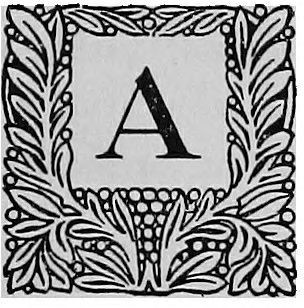
A jinriksha ride through the picturesque streets of Tokyo about two to two and a half miles from Shimbashi Station brings you to the Aoyama Parade ground, which, with the Imperial Park forms the site of the Exposition of 1912. From corners of the grounds and a temporary station, trains will leave for and come from all parts of the Empire. This place, now perfectly bare, will show the result of Japanese genius and invention in a short time. On one side is the park of the Crown Prince’s palace, and at another corner is a military university, which will be removed. The ground here is high and the air very fresh and invigorating, as it is in an open part of the city, and it will remain a permanent park after the Exposition. The work on the ground begins early in 1908.
Tokyo alone is most interesting in its street sights; the children at their games, a baby asleep in the shop, a lovely vision, two old people weighed down with their burdens, pilgrims in quaint garb, the boys and girls returning from school with knapsacks full of books, arms over each others’ shoulders, bright-eyed girls out for amusement or to pay visits, the big milk carts and street vendors, the portable kitchens, around which some are taking an evening meal, the flower wagons, the horses with their bright accoutrements, the strange calls, the pathetic blind beggars, all mingle in the city’s drama! The road from the parade ground is lined with parks and villas, passing we see many gay[Pg 76] singing children. We go through the deeper lanes and hedges to the park which we enter by an avenue of truly imperial trees, pine trees, and groves also of maples and shrubs, 120 acres, rented from the Imperial household, paths of delightful vistas, mystery and woods full of charm, a sylvan paradise, hilly, rolling, full of possibilities of gardening, near Tokyo Bay.
Dr. Fukuichi, the chief engineer of Japan, is the Chairman of the Committee for the buildings and is now engaged on the plans. The gardening and electricity, each best authority, has been appointed. Mr. Fuwa is the Director of the Imperial Horticultural department and is the chairman of the Committee on Gardening. The buildings will be unique,—five departments, education, science, electricity, manufactory.
The Governments of the world have been requested to build in the style of their own country. Viscount Kaneko emphasizes that every nation should incorporate its own architecture in the structures. “We hope,” thus he says, “that our ideas of architecture will be revolutionized.” There will be large hotels constructed in different cities of Japan and many new ones in Tokyo, as the houses already here are by no means adequate.
“The International Exposition,” said Viscount Kaneko, “as far as I have seen in Europe and America, have been too large in extent and scope, so that as a rule it is too great for any one to grasp as the exhibits are over-full, and might be described as ‘too much of a muchness.’ Neither the eyes nor the ears can take in the magnitude, so you are dumb and numb, and you come out overawed by the detail. The extent and magnitude have defeated often their object:[Pg 77] too much paltry stuff, and show and display, not realizing the educational purpose, have become rather a sight-seeing scheme.
“This was said of Paris and of St. Louis, and I have heard from different sources, commissioners, executives, both European and American, express this feeling, and so at this juncture of world’s fairs, I think the organizers are thinking to lessen the extent and magnitude and thereby to make the exposition compact, systematic, and effective.
“I believe that in the future the world’s fairs will be lessened in size and in indiscriminate exhibits. That is my idea, which I hope to incorporate in the coming exposition. We mean to emphasize to the world that in the grandeur of the buildings we cannot compete with Europe and America, and also Japan cannot show anything of electricity, manufacturing or machinery, and we cannot give any lesson to the world either, in going ahead of other nations in the ensemble;—we hardly hope to show much of overwhelming value on any line to the world, as it is the first International Exhibition in the Orient. Consequently we expect to make the Asiatic exhibit the special point; we want to exhibit all the products of Asia and the Indian Archipelago, the Philippines, Sumatra, Borneo, Java, Australia, New Zealand, and Formosa, and so we will have the first Asiatic expression of commerce on so large a scale, showing unity of language, racial features, religion and customs, for we can collect from all those peoples and realize a unifying of the Oriental Nations, and enlighten the world as to the Oriental essence, thought, ideals,—past and future. This is our aim.
“Next, we expect to make Tokyo the centre from Tokyo then, expanding in the radii of Nikko and Sendai in the north,[Pg 78] and in the south Nagoya, Nara, and Kyoto, and farther down south Shimonoseki and the Island of Kyushu, and thus the whole country will be thrown open to the people as an exhibition ground. All the temples will be open to the western visitors, and every corner and every mountain and all the scenery will form a part of the Exposition grounds, and thus we expect to show to the Western peoples the manners, customs and life of the Japanese, and show them also, not only in public, but at home. Thus also by interchange of ideas between the Japanese and Western nations, they will come to a better understanding of each other for mutual benefit, so many misunderstandings between the East and the West may be corrected and also it will bring about a “rapprochement” of sympathy and interest, and in this manner we will contribute something to the world’s commerce, diplomacy and civilization. These are the general lines along which we shall move and we expect to organize.
“We wish the exposition also to serve in statecraft. Formerly the Sovereigns and Ministers negotiated the diplomacy of a nation in secret conclaves, but within the last fifty years this has been changed. Now the people hold the power. If we can bring a better understanding between the Orient and Occident by the means of a friendly rivalry of an Exposition, the ends of civilization will be met and progress will be served.
“Japan is considered the leading artistic nation of the Orient, but the nations of the world have not seen Japanese art arranged in order. Now we expect to have an exposition of Japanese ancient art, arranged chronologically, and also according to schools, covering a period of 1,500 years, after the introduction of Indian religion and Chinese[Pg 79] philosophy into Japan. This period will be divided into eight periods of Japanese artistic history, and each period will show the characteristic arts of painting, bronze and pottery, and lacquer, and so forth, and will show characteristic ideas and instincts of the Japanese people. Thus the whole history of Japanese art will be brought down to the modern age.
“These are only a few details of the forthcoming Exposition which will, we trust, bring the East and West into greater unity.”

[Pg 80]
[Pg 81]

In the two great branches of state craft, diplomacy and finance, it is interesting to see the interchange of qualities and the intellectual dominance of each is usually thought to be most marked, still there have been men of rare human qualities, who were financiers and diplomats as well.
Baron Takahashi unquestionably belongs to this class who weave, as do certain scientists, a romance of facts or more justly speaking comprehend the intense humanness of dollars and cents.
Five times he has crossed the ocean to visit America on commercial missions and brought back a fund of observation, as well as more material baggage. He has put his finger on the pulse of Wall street and discovered some of the causes of its fitful and erratic pulsations, and has even after bearing the tremendous financial burden of a country in its hour of extreme need come out with the vigor and the magnetic vitality of a man of the future, not of the past.
We thought of Necker at once and the cheerful Latin optimism seemed in the speaker and in his person.
“Japan has not yet recovered as we know from the late war, and she requires foreign capital, we must look to the world’s markets for it. Unfortunately for us we must wait for our loans until the affairs of other countries are on a better basis or rather in a less fluctuating condition than they are to-day. I believe that if men of capital will continue[Pg 82] to invest in my country, it will be to their advantage and I am also desirous for the mutual good of both, that these investments be as safe as possible and in this I have been and will be an intermediary.
“From the standpoint of investors England and Germany are unquestionably the safest and surest markets to-day. Financial security always goes with freedom, the United States has such serious abuses of power that freedom becomes disturbed and so as by a paradox tyranny often reigns.
“The continual warfare between labor and capital gives rise to uneasiness and disturbs the market, as does the lax social conditions the sequel of the indiscriminate immigration and it has the seeds of revolt against established rule.
“Something must be done with the banking system in America and there must be reforms also in the monetary system. The peculiar centralization of the gold in Washington and so in an event of crisis the intervention coming wholly from there, is not advantageous. A central banking system as in Germany should be established. The amassing of great fortunes is not however as many suppose an evil, money is never idle except unspent in the pocket of the poor man! The rich man puts it at once to use. Turning to Japan we see some very hopeful signs and some serious drawbacks. Foremost among the things which promise most, are the sugar plantations of Formosa. If in a few years she furnishes us with most all the sugar we need as we expect and Korea with her vast territory as yet waiting for energy and for intellect to develop can give us cotton, we shall find these great items in our imports changed to sources of income and in the near future[Pg 83] a trade balance in our favor. This cotton of Korea is of far more value to us than her gold mines. One of the major drawbacks in Japan commercially is the want of co-operation among small manufacturers and work men handicrafts.
“We feel this primarily in the exports to China. Take the case of Manchuria. The Chinese are very observing and they can tell the difference between our work and German work at once and they prefer to use the German although they must pay more for it.
“The cause of this is often that a poor manufacturer is many times compelled to over-produce under great pressure and turns out half-done work, even when he knows it means no more orders.
“Local authorities are trying to urge combinations among manufacturers, but so far have met with little success.
“This isolated working purely for self interest is undoubtedly the root of what is called Japanese commercial dishonesty.
“To France we must turn to-day to see the supreme example of thrift and industry and reciprocity of helpfulness. Japan unfortunately does not yet give us as hopeful a picture of economy.”
Laughingly assuring Baron Takahashi that we had a personal sympathy with the people who could not save, he answered playfully that we must all acknowledge the wisdom of providing for old age and children, and with that very human and humane observation our interview was closed. We felt the man spoke rather than the financier.
[Pg 84]
[Pg 85]

If you look at an astronomical map of stations of observation, you will see what looks to be a meteoric shower of dots on Europe, where there are one hundred and thirty observatories, sixty-five in North America, six in India, six also in Australia, two in the West Indies, three on the coast of China, and following the line of sea and shore northward in a vast region of watery waste only two lone spots which are the two Japanese observatories. Their importance to science is therefore obvious. Though situated on a height which seems to crown the city of Tokyo with the picturesque foliage of Hibiya Park, where the lungs and the mind expand, we are surprised to be told that for star gazers, there is not enough space. The observatory is soon to be moved; so bad are the atmospheric conditions and it is all but impossible to obtain good results in astronomical photography. In spite of this draw-back some very successful work on the Milky Way has been obtained by Prof. S. Hirayama, still as the enthusiastic young assistant says who has just returned from two years at the Yerkes observatory at Williams bay, Wisconsin, it is very unsatisfactory.
The work just now of the Observatory is the observation of variable stars, and the study of the deviation of verticals for which the observers must go out into the country to other heights. The chief work of the staff is along the line of time service, variation of latitude, solar observations, though the most important work is possibly on the Milky Way. The[Pg 86] staff has been up to this time small, but there is now a sufficient force to ensure greater results of a more searching character. The present officers are:—Director, Prof. Terao; Professors S. and K. Hirayama; Assistant Professors, Sotome, Midzuhara, and Ichinoye.
The Astronomical Society which has just been established intends to popularize the study of astronomy, and they will have for this purpose, a series of journals published in Japanese. For scholars there will be also journals in English, German and French, giving an account of the work done at the observatory as well as matters of universal interest to astronomers. In eclipse trials many observations have been made; some of the plates are most beautiful, one taken of the corona of the sun by Prof. Hirayama was exquisite, this work was done at Padang, Sumatra. The instruments are three equatorials, two meridian circles and several smaller telescopes. Proudest of all is the institution of their Reflers clock which, I believe, is the only one in the Orient. The library is excellent, containing very many valuable works of reference. Mr. Ichinoye, while at the Yerkes observatory, took special work in spectroscopy and double stars and he speaks with enthusiasm of Profs. Frost, Burnham and Bernard, who are among the leading astronomers of the world in solar and stellar investigation.
An account of the taking of the coronax of the Sun is given graphically in the “Annal” of the Tokyo Observatory.
We left Singapore on the 4th April on the steamer “Van Outhoorn” of the Koninklijke Paketvaart-Maatschappij, and four days later we anchored in Oleh-leh, at the extreme north of Sumatra island. During the rest of the voyage the steamer remained within sight of land. Our destination,[Pg 87] Emmahaven, was reached at one o’clock in the afternoon of April 15th. There we took the train for Padang, only twenty minutes’ journey. In Padang I was able to select an abandoned shooting ground for archery on the seashore near Damar Street, as a site for the observing station. It was found afterwards that this site was too near the sea; when the sea was rough it was impossible to make sextant observations with artificial horizon on account of the periodical trembling of the ground. But fortunately on the day of the eclipse the sea was extremely calm, so that we could get sharp photographs. Dr. Lau, a German engineer, who had been resident for a long time in Padang, was most helpful to us during the whole period of our stay. He provided for us both labor and materials. On account of the excessive rain it was not possible to commence the setting of our instruments until April 27th. The principal instruments employed are as follows:—8-inch prismatic camera, in charge of the writer; 5-inch coronagraph, in charge of Mr. K. Hirayama; Vogel’s direct vision star-spectroscope in connection with a 4-inch telescope, in charge of Mr. Sotome.
Now for a few words about the weather conditions at this station during my stay. Observations at Padang for several days after our arrival showed that as a rule the mornings were quite clear, but about noon the sky began to be overcast, and in the evenings it rained. Since the totality was to occur about one o’clock in the afternoon, we were all anxious about the visibility of the eclipse. But later observations showed that the weather was greatly improving. Still there was not a single day in which the sky was entirely free of clouds, such as I had enjoyed during my stay in India to observe the total eclipse of 1898. The[Pg 88] nights were specially bad, with either clouds or rain. Till the time of the eclipse we had only a few clear nights, during which we tried to photograph the spectrum of a bright star for focussing.
The morning of the day before the eclipse was cloudy; it began to rain in torrents in the afternoon and by night it had not improved at all, promising nothing but rain for the next day. The morning of the 18th of May dawned cloudy, but afterwards it began to improve. The clouds broke in several places, and the clear sky gradually increased in extent. Noon was the hour of totality. During totality, although the sun was still covered with thin cirrus clouds, it was yet possible to observe the corona through them. The entire programme was carried through successfully, but with little hope of getting results of value. All the astronomers stationed at or near Padang on the west coast of Sumatra met the same fate. Fort de Kock was the only place where the sky was perfectly clear, although it was pretty near the northern margin of shadow, and the chance of clear weather was the poorest. Our site was excellent for the observation of the moon’s shadow. Two or three minutes before totality we saw the darkness approaching through the air, on the sea to the N. W., and the shadow swept with great rapidity towards us; at this moment totality commenced. We also noticed that the light was approaching, from the same direction, just before totality ended. In making the exposures I was assisted by Mr. Shakushu, a Japanese priest at Singapore, who rendered most efficient service in this way. After the eclipse the development of the plates was taken up. Since the weather in camp was very hot in the daytime all the plates[Pg 89] were developed at night, ice being used abundantly. The resulting negatives were nearly all satisfactory, which was contrary of the first expectation. Yet the effect of the clouds is clearly seen in the long exposed plates of the 5-inch telescope.

[Pg 90]
[Pg 91]

General Nakamura, the head of the Government Steel Foundry, when interviewed in Tokyo, desired to express regret at the impression given to the public that he advocates a high tariff on steel imported from other countries, for the purpose of advancing the interests of the institution which he represents, to the detriment of foreign producers and to the exclusion of necessary importations from other countries. In reply to questions he stated:—
“I do not advocate the increase of the tariff, nor has the question yet been considered by the Government. What I said was that, among the causes of the hard position in which the foundry is placed is its inability to compete with supplies from abroad. So far losses have been sustained by the foundry, but without an endeavor to place the value of the turn-out on a par with foreign imports, how long can this be done? We are endeavoring to regulate this, and possibly a more radical, or somewhat readjusted, protective policy may be beneficial.
“There are, of course, other causes for the still undeveloped manufacture of steel in Japan. The present output is insufficient for the needs of the market. Only one-third of the supply needed is made by the Government Steel Works, and even this one-third does not include what is needed for the other branches of consumption, such as machinery, hardware, etc. On the other hand, the demand for steel has considerably increased from what it was before[Pg 92] the war, and has so very much outstripped the supply as to be a cause of anxiety to me as director of the works. The fluctuations in the price of steel, which have been considerable, have also had a serious effect upon the market. In the perfecting of the quality of the material itself, for the first time this year it underwent the inspection of Lloyds, and it was pronounced that the output was qualified as material for shipbuilding, provided it passed examination. The Government Foundry has therefore been registered at Lloyds.
“There is, as stated, great opportunity for the development of skilled labor among the operatives, and considering that iron work is so difficult, the progress made is most gratifying. Most of our instruction in steel manufacture has come from Germans, and most of our officials are graduates of the Tokyo University who have studied abroad. In the housing and care of the operatives some care is taken. Rent is free, but the accommodation is not adequate to shelter the 9,000 employes. Secondly, there is a convenient supply of food at low rates, a commissary, and in case of injury a relief fund, which provides medicine and temporary wants, and, in the case of death, looks after the widows and orphans. A society for this purpose has been formed, and its interests are one of my chief concerns. The operatives are recruited from Fukuoka prefecture and from other parts of Japan, and while not feeling that the Japanese are particularly adapted to this work, given the time and experience I am pleased with the results. The average age of the operatives is thirty, and so we have the advantage of youth and strength in our favor. The Chinese mine at Taiyeh supplies one-half of the ore used[Pg 93] by us, and the rest of the ore is brought from different parts of Japan. Owing to the condition of transportation the price of iron is appreciably dearer than in America. Beside the material supplied to our army and navy, the remainder is sold on the open market and consumed in the usual manner in the manufacture of utensils and implements of commerce. The machinery used in our workshops is from Europe and America, wherever we find the best and most up-to-date plant.
“In conclusion I want to say that this question of duty is a serious one—an exceedingly serious one—one which entirely rests with our Government, and it is not my part to enter into the decision except to present existing conditions. It is the purpose of the Government Steel Works in time to supply the whole demand of the country. This is our ambition, and that is why we are focusing our attention at this moment upon the causes of our inadequate production and failure to make good our initial programme.”

[Pg 94]
[Pg 95]

There is no time when Nature is so approachable as in autumn. That season is like the green room of the actress, when she lays aside her stage attire and in deshabille she is communicative and you gain many a secret into her methods and her ideals and aims!
Her laughter is no longer art, but natural, and she shows her foibles and her whims with a childish abandonment. Kamakura has in resume, the exquisite traits of Japanese scenery. The dominating features of the artistic and the diminutive and then the glimpse, just a glimpse of the grand. The sublime is a note I have never heard touched in Japan, except at Port Arthur.
Kamakura has also the needed accessory of a landscape, i. e., historic background. The center of ecclesiastical domination of Buddhism in the middle ages, the spot where the miracle of Nichiren was performed, that beautiful episode which is so often treated in art and which reminds us of those famous martyr dramas dear to the heart of the Christian.
Heaven has not always interceded to save the sainted, and how the heart leaps, when we read of those rare moments, when it has. Nichiren, we are told, was busy during the whole of his time in exile in “teaching, preaching, and itinerating.”
But like many a Christian saint he did not temper his zeal with discretion and was rearrested.
[Pg 96]
The story is familiar to all, but it is beautiful, and like that of Joan of Arc or Constantine or St. Martin and a host of others, will bear repeating.
“Kneeling down on the strand, the saintly bonze calmly uttered his prayers and repeated ‘Namu mio ho ren ye kio’ upon his rosary. The swordsman lifted his blade, but a light blinded his eyes, the sword was broken and the saint was saved and afterward pardoned.”
The surf was dashing in fine shape on the day we visited Kamakura and the soft grey, like the color of a faded tapestry brought to our “inner eye” the old saint and the huge blade broken, and the terror of the evil men. Japan has this touch with the supernatural which raises her in our esteem!
The first glimpse of the Buddha set in the bower of maples was not disappointing. Its vast proportions and its solemn repose fitted into the coloring of red and yellow and the curtain of Nature softly hung in folds of crimson and green, and a veil of mist harmonized the whole into an etherial essence dear to the mystic. The Buddha of Kamakura is the Prince of India, and those Hindoo lines of proud lineage, the arch of the nose and lips and eyebrows, all tell the story of his kingly degree. The hawk-like glance of the sovereigns of the kingdom of princes, is of course subdued in the religionist, but I doubt if it is extinct.
The Buddha is after all a man and the gentleman and the boor still show! We went once in Paris to the cloister where the women of the old noblesse are immured and there in spite of almost inhuman rigidity of demeanor caused by every crucifixion to mind and body “the goddess was known in her walk” still. So difficult is it[Pg 97] to warp and contort Nature! So difficult and so futile!
“Consider the lily how it grows” is an injunction that no churchman has ever fathomed. Nor ever will! Only God did that!
It is well that Buddha sits among the maples and the cherry blossoms, for their wisdom may penetrate his bronze heart! The view from “Kwannon temple” is a rare bit of Japan.
There in the tea house we sat and drank it in, with the stimulating beverage.
The cliffs, the village, the ocean, the dainty colors, the aged aspect of it all and the stir of new life, everything toned into an autumn symphony, it only needed Chopin.
But Chopin was far away and there is no music in Japan! How curious that the fickle goddess left that out and set all the harmonies of Nature in the heart of the Philippines! The “Hachiman shrine” is a bit of Saint Marks, with its pigeons, and the avenue of ancient trees and torii which leads up are good and far less distracting than the temple approaches of the cities.
Better than all was Nature’s sanctuary where all is harmony; where no narrow sect nor vulgar stare, nor discourtesy disturbs your thought, and where one can read the word of God uninterpreted by any narrow priest, or any narrow passion, but in “Spirit and in Truth.”
The colors defy all art to reproduce them, the declining year, the memory of the rich hued summer, the pathos of something gone, the hush of stream, the absence of bird notes, the quiet, the intimate quiet of Nature, which is never oppressive, never aught but refreshing, and which leaves no scar nor wound!
The delicacy of the laying away the past and the hopefulness[Pg 98] of it all! We would almost like too, to fade away into the ether, laying off the coarse garment of the flesh and finding what Buddha and every sage has sought!
“Some soft warm place in field, or wood,
The mother will be sure to keep,
Where we shall lay us down to sleep.”

[Pg 99]
Over the old worn world he came,
Flaunting his flames of red!
The stern walls of Asia guarding the sky,
Waited in calm, as in years gone by,
Upward he came, breathless, we said—
“Can he scale this fortress, centuries strong?”
His answer ’twas written in cohorts high!
He triumphed, night fled,
The day was begun, and Asia, she of the long, long night
Said, “Welcome, my son!”
So up rises the day on the days that are fled!
And Asia’s sun glows a brilliant red,
And the future resplendent of Asia will come—
Come as this sun, a splendor of life on the days that are dead!
South China Post
[Pg 100]
[Pg 101]
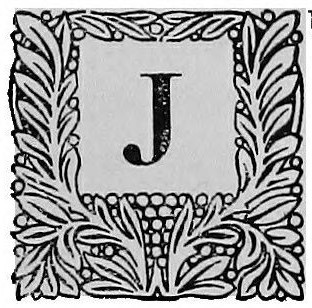
Just outside of Asia proper as in a proscenium box are these islands, half mystic, half savage, like the kings who sent men out to conquer the world, with sword in one hand and hostia in the other!
No place on earth has had possibly a more romantic experience, full as it has been, of the acts of primitive unchained manhood and the infinitely worse aspects of human nature, the avarice, intrigue political and ecclesiastical eccentricities of civilization. The whole story is written in the annals of these verdant radiant slopes, not all written yet! Then on pages brilliant as some illumined missal is inscribed the devotion of the chivalrous sainthood of Spain. The dramatic element is furnished by the Chinese invasions followed by the British and our own and as you pass along these streets, the walls and towers “cry out.”
Just outside then of Hongkong, the “superb” the Genoa of the East, her prows turned to every point of the compass, her flags the colors of human statehood, of petty kingdoms and massive empires, the gateway of Asia, the Asia of the North, destined like everything Northern to outrank the South, in virility if not in subtility and charm, we of the Philippines have a glance which takes in more than a piece of the oriental horizon it embraces. The chiaro-oscuro after leaving the islands at the end of a long sejour, when as at the close of life, the colors seem to blend into one dominant tone, is a sort of soft grey, enveloping the receding city,[Pg 102] built so far away, at so much sacrifice; over all the blemishes the cruelties and crudities of a society hardly half formed, of a state hardly above the first foundations, one’s feeling is wonder and pity, wonder that men and women have had the courage to face it at all, pity for their heroic struggle against ignorance and all the human brood of evils under a tropic sun, which dries the blood in the veins and leaves the nerves tingling to every breath and thought.
But were this all, who would have the power to live out their story here! In the phantasmagoria of this tropical nature there is something ever new, ever fresh, ever upbuilding and upraising, the forces of this universe of which we are a part. There is a measure in this Oriental dawn, like the lines of Omar Khayyam, which swings in the rhythm of the hours. Every day we feel we can, every day we do! Then in the embrace of the transcendant peace of the Oriental night, we learn to watch and wait, knowing we shall be soon with “Yesterday’s seven thousand years.”
There is something in the atmosphere, a certain occult fluid, which takes the place of ozone and strange as it may seem these sunburnt, sunscorched lands have rushing over them the gales of ardor, of desire to run the race of manhood worthily, every nerve taut, every tendon stretched.
“Time cannot change, nor fortune stale her infinite variety,” would well describe Manila.
Gathered from the four corners of the earth a motley crowd is her citizen’s roll! Embryo politicians, incipient scholars and philanthropists, altruists of curious conflicting lives and creeds, every social curiosity in the gamut, from those who never saw a ship until they reached San Francisco,[Pg 103] who were once a cordon bleu and are now posing as grande dames, (?) to those who have given up all the beauty of some castle height in Spain, or some equally refined home in America to spend their best of life and service as a tropical gift, lavish and unstinted, without thought of return.
We also find all the comical inconsistent forms of religionists of every shade of narrowness and Pharisaism, at once gallant defenders of their faith and guilty of inhuman barbarity to their fellows, intriguing clothed with piety, just as in the old, old days, but where is “the milk of human kindness” on the other hand sweeter to the palate, sated as it must become with all else, where do you see lips quiver more tenderly over a sorrow, or eyes light more divinely at noble word, or deed!
There is something intensely human, in our city, expressed by the Spanish word “simpatica”! All the personalities are so well known, so intimately and injudiciously discussed and so ineptly criticised and then in a moment of abandonment, the praise is so real, the encomiums worthy of an Attic sage!
The heroes and favorites are after all well chosen in our city and her gratitude outlasts many a more ambitious burg! There is heart in what Manila does, often almost incoherent heart, but what is the rarest science, the most ambitious churchism, to one drop of that pure wine of goodness and enthusiasm, “pure and undefiled” like Him who went about doing good?
Slowly we are evolving a city from the middle ages to the present type of town, full of modern action and our institutions are rising from a substructure long prepared[Pg 104] by the past.
Work along the humanities at the Catholic university of St. Tomas and by the Jesuit Fathers, at their famous school, the “Ateneo,” has prepared the way for a national university whose buildings are rising and whose instruction has already commenced.
The work of the nuns, Spanish and French and German, has been an excellent training for Filipina mothers and their family life.
They have formed whole generations of good women, whose grace and true womanhood put to the blush most of the American, or European importations, with their petty jealousies, their slanders and their utter frivolity.
Today the Filipina girl, like her sisters in every land, aspires to greater learning and the way is being opened also for them.
Still in bastion like walls within the walled city, whose ancient moat and ramparts are the pride of our town, you can see as in a vision of other more refined days, under cape of black, white and of soft outline, faces glowing with a devotion to the highest ideals, not of our time. They are like a rare vintage in crystal from the sunny slopes of Spain, or France, uplifting all women at the sight and shaming the ignoble types of today!
Spain taught her children scanty science, if you will, but if we teach these people one half the goodness she left in their souls, we may congratulate ourselves, congratulation we are not likely to be worthy of, unless there is a speedy change for the better.
Our hospitals are several of them, of the latest equipment and directed by the devotion of well instructed nurses.[Pg 105] St. Paul’s, under the supervision of the catholics, though free to all in its beautiful catholic spirit, is perhaps the most popular institution in the city. French devotion has made it the delight of the sick and weary.
Among new hospitals are the “University,” the “Civil” and the parent of all “San Juan de Dios,” an ancient institution of splendid traditions.
“San Lazaro” for infectious diseases will some day be one of the foremost of its kind in the Orient. We need sadly a home for the aged, as our over-crowded alms house is not up to date and we ought to have other provision for our children. The “Looban convent” where a most lovely charity is dispensed by a mother superior who radiates goodness, with her choice spirits about her, needs more assistance and sympathy. The “Mary Johnson” hospital is combining a training school for nurses and the Municipal Board is encouraging in every way the training of young woman in this most necessary branch of learning. The sanitary conditions of the city are slowly being put on a par with those of other cities. A new water system just opened brings the purest of mountain liquids to our homes and down in the depths of earth a drainage up to date is being laid. We need a first class hotel large and combining the charms strangely little utilized, of our climate and delightful nature. Our present hostelries are by no manner of means to be as severely criticised as they are, as they afford quite a fair degree of European comfort. Buildings for trade, commodious and lofty and pretty private villas are going up in all parts of the city. Our water front, an unsightly mass of made land, awaits the hand of the architect to raise the state buildings, adorned with the symmetry[Pg 106] of art to embellish our chief glory the wide, cool stretch of ground we call “Luneta” where we hope to see soon the statue of Rizal, who is the chief glory of the New National life!
A trip through the Southern islands on one of the “Smith Bell” steamers, affords entrancing pleasure and variety of experience, and the summer capital of Baguio and hot springs and sylvan sights are reached by the Manila and Dagupan Railway. We have a press which has talent but is handicapped by a narrow and very false idea of conservatism and there is a disposition to restrict its freedom, which is a sign of weakness if not of culpability. Great states and great people are not afraid of criticism nor even slander. Innocence is subjected to both, here as elsewhere, and the most innocent the most subjected here as elsewhere.
Who, but loves this people who has lived among them, not expecting perfection, nor a degree of disinterestedness which we do not as a Nation possess nor as individuals illustrate?
The Filipino has qualities which the longer you know him, commands your respect and sympathy and his imperfections are no more disagreeable than those of more highly developed peoples.
She wants freedom, this great, beautiful land, and some day it will be hers. The day she has it depends largely on herself and on those men and women of ideals and of ideal lives, whether Spaniards, Americans, or her own who march with the uncrowned monarchs of the race, not towards the spoils, but the toils of each day, head high, hearts light, because pure from greed and remorse.
[Pg 107]
A free people not in name but in reality.
We have Clubs galore, English, German, French, Spanish, Filipino, the “University Club” and the “Columbia,” this last especially for young men. These clubs would compare favorably with those of other cities of our size.
Politically the islands have taken strides since the opening of the “Philippine Assembly,” a body of men which has done credit to itself already. The future of the islands, its prosperity lies along two lines, mainly education and the agricultural development. Many rich Filipinos are sending their sons to the States to be equipped for the modern struggle, in both.
Our Judiciary is highly praiseworthy, our Supreme Court we are very proud of.
The “Philippine Commission” has had men of considerable talent, men of opportunity and availableness and its rule has not we believe been stained with any greater faults, or crimes, than that of most governing bodies. And it has been distinguished by much work well done.
Some witty foreigner has said:
“America is rather old to give as an excuse for her blundering that she is young,” behind that sarcasm as behind all there is just a stinging grain of truth. Our blunders as our self-assurance, the latter very largely responsible for the former are often as amusing as instructive to lookers-on of older civilizations, especially to those of the East, who like the grandmother with the small boy, are startled and perplexed at all the fancied improvements, she having spelt out that wonderous word “life” which is the most bewildering in its meaning, some time since.
The aged granddame the Orient is being taught by a[Pg 108] somewhat flighty and exceedingly imperious and headstrong youngster and she smiles through her wrinkles often a superfine smile as she has seen so many toy inventions and toy states rise, fall and even pass from memory while she still lives on. She enjoys the spectacle of western sweat and energy and she watches as all age does to see what sort of beings this fancied superiority has produced. It is no wonder she still keeps on smiling as she sees the pitiful result of so much dazzling modernism and exquisite theories and grandiloquent faith shattered the moment you touch its adherents. It is a very, very old story as old as when woman first bore the transgression for herself and for man and through her patience and heroism brought atonement. But the sun still rises in splendor over Manila and we hope and wait and long, as they have since the first whiteness followed the first darkness—for the day. There is late talk of giving up the task America has set herself in the East. If she does, it will be another sign of the triumph of those qualities which are disintegrating her life at home, greed, ambition, social, religious and political, the unsatisfied passion for pleasure which makes her one of the most lawless and frivolous modern Nations.
If you touch an orange it will roll over but many shocks will not turn a world out of its orbit, for it is held in the hand of One, who can guide a tangent, quite as well as a steady methodical body, and who can remove at will a whole astral system. What the future holds is one of the most solemn enigmas but only what America is can she put in here and “would it were worthier.”
Across the East the dawn is coming, not because the West[Pg 109] is come to teach her new forms of greed and ambition, but because the forces within her, the eternal primeval elements are stirring and forming in the combinations which mean life.
Within her will come her salvation, not from without, from the Oriental himself will come the best of his future.
Western civilization has failed to produce on any large scale, noble character, the East knows it. It has watched the falseness of the state craft, the greater falseness of its religious love of aggrandizement, it has seen in the adherents of the latter no reason to choose them as a pattern, quite the contrary.
The simple truthful faith of Christ whose ethical teachings are so direct, so free from sophistry, a child might read it has been and is today, the excuse for the darkest crimes. Said one of the leaders of the Christian faith in Japan, “It is only with sinking heart one can point to a faith which bears such fruits, when the so-called heathen can teach us any day conduct which outshines ours as the sun a glow worm.” From within must come the truth of God in her own soul as men are every day more powerless to live it or teach it, though the truth remains eternally vital.
May the God of light guide this great, glorious Orient into a future of illustrious achievement and untarnished ideals.

[Pg 111]
PRESS OF
STAPLES PRINTING CO.
142 ESCOLTA
[Pg 112]

[Pg 113]



[Pg 114]

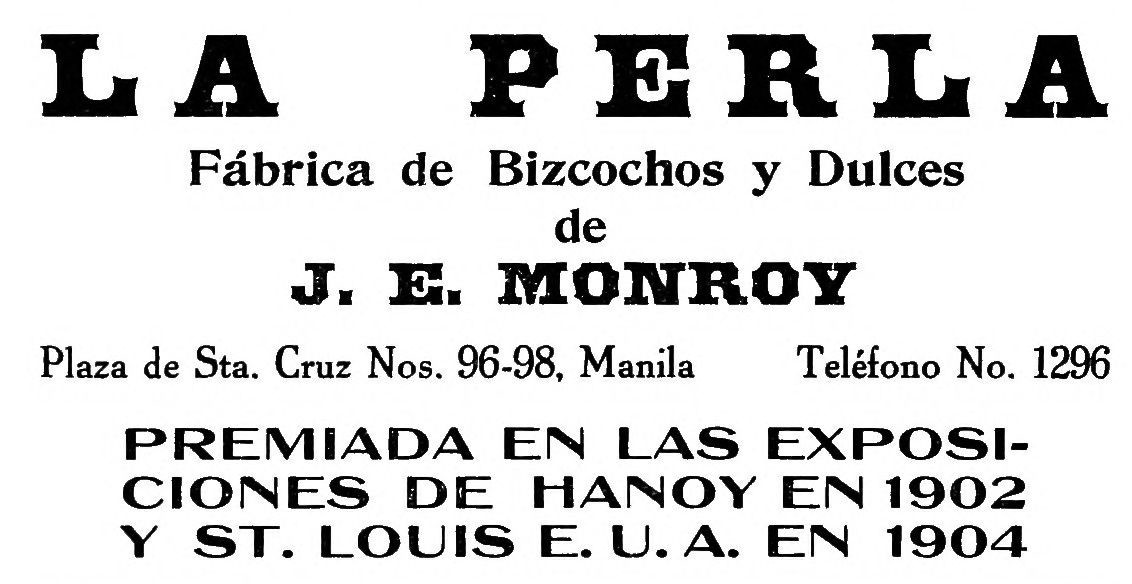
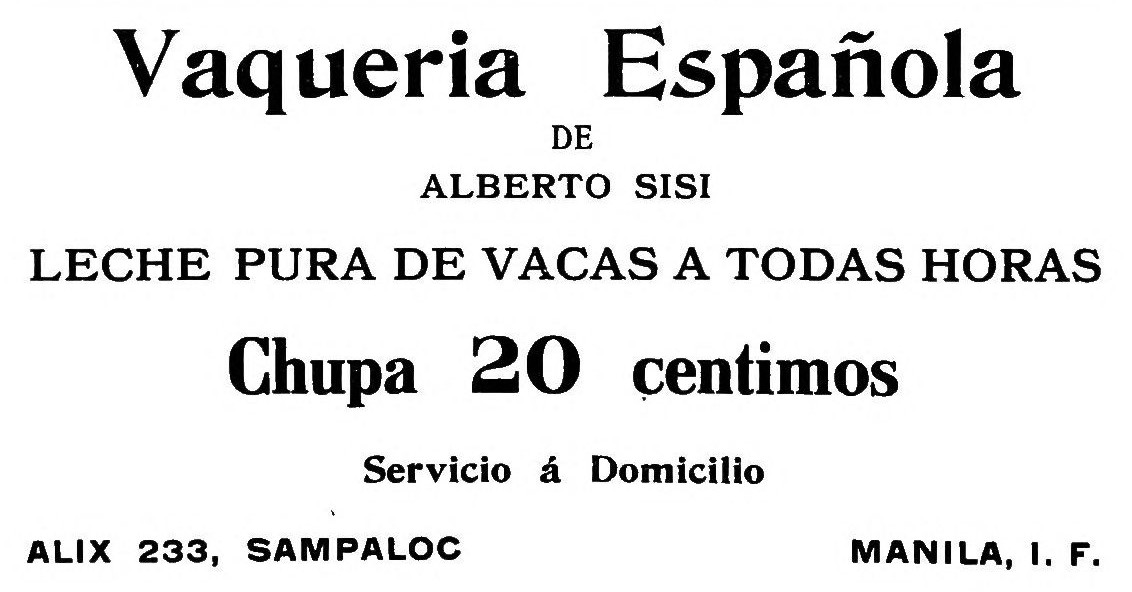
[Pg 115]



[Pg 116]
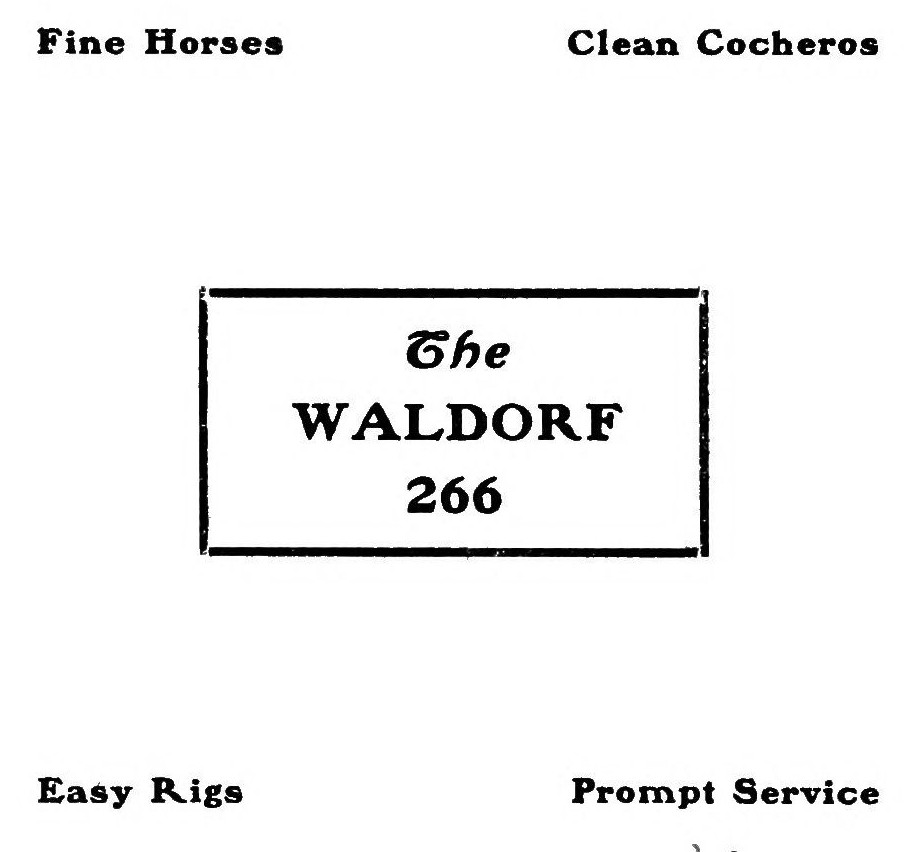

[Pg 117]
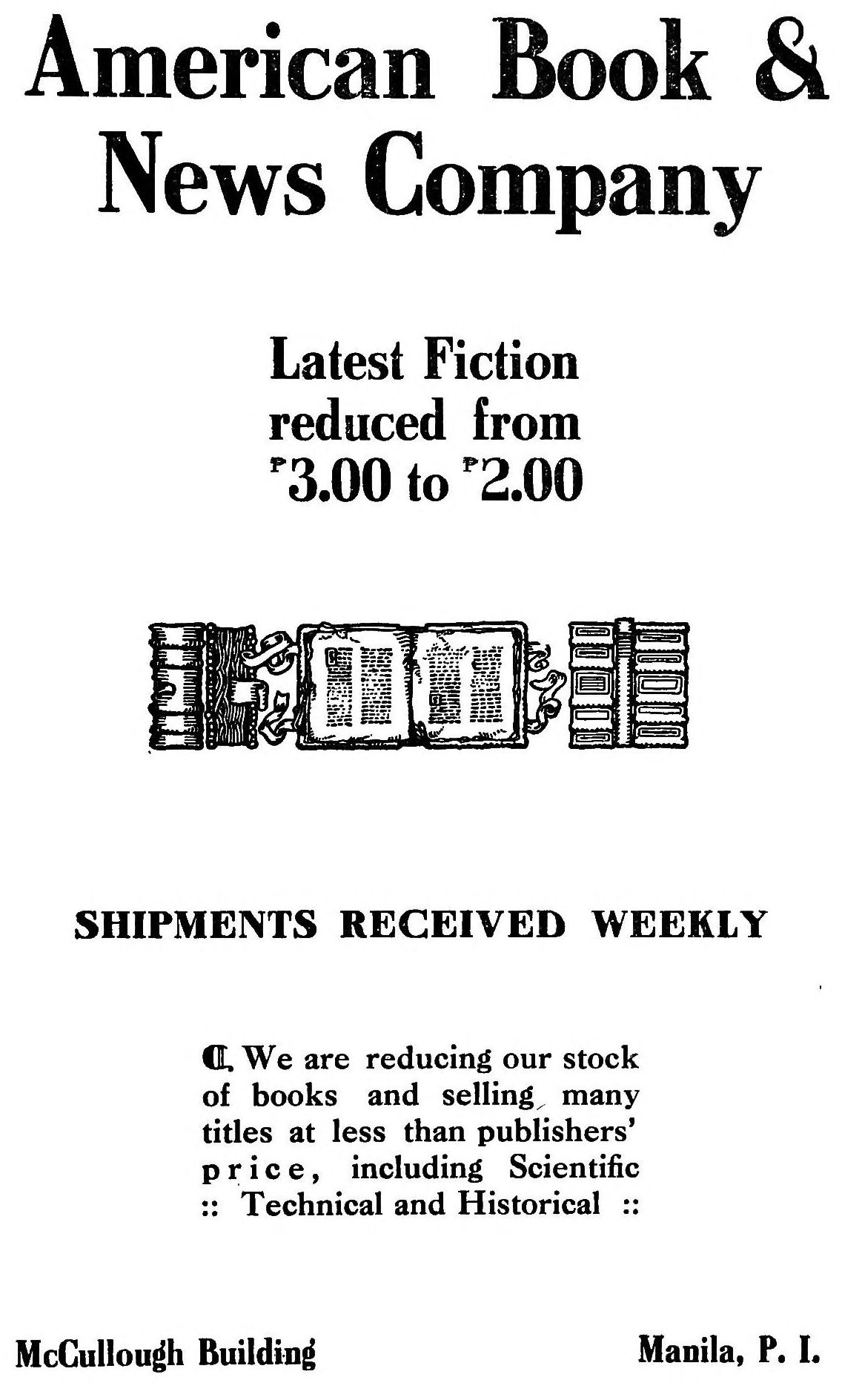
[Pg 118]
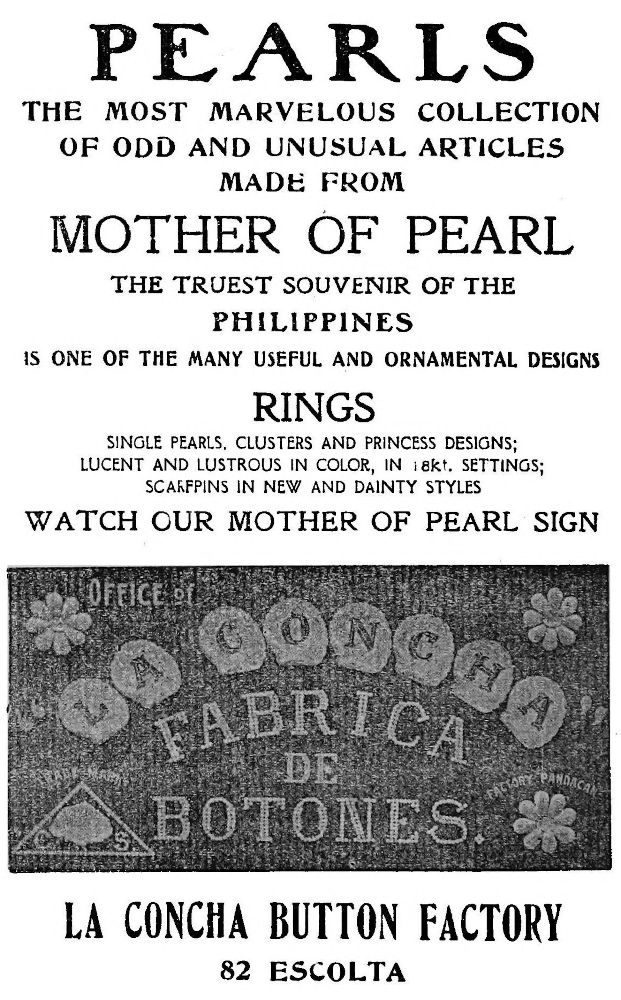
[Pg 119]

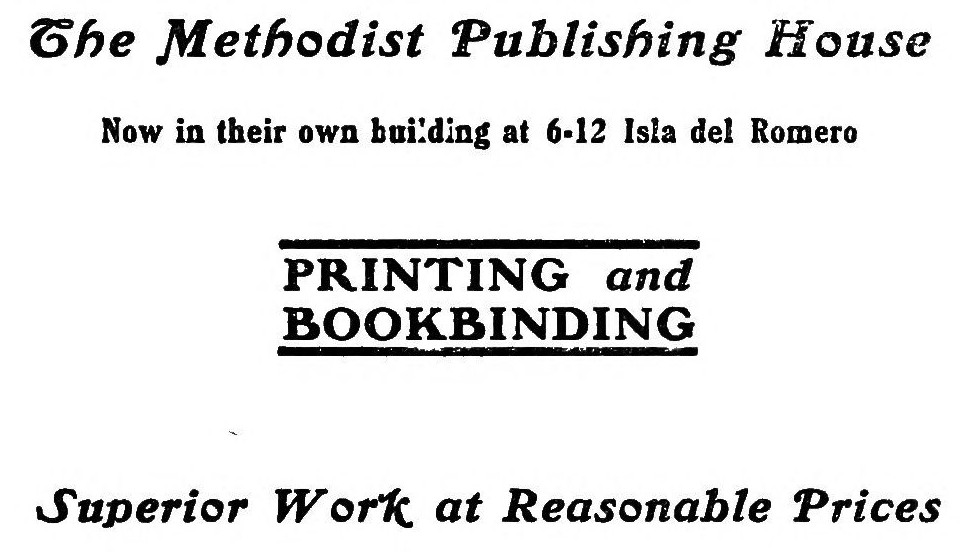
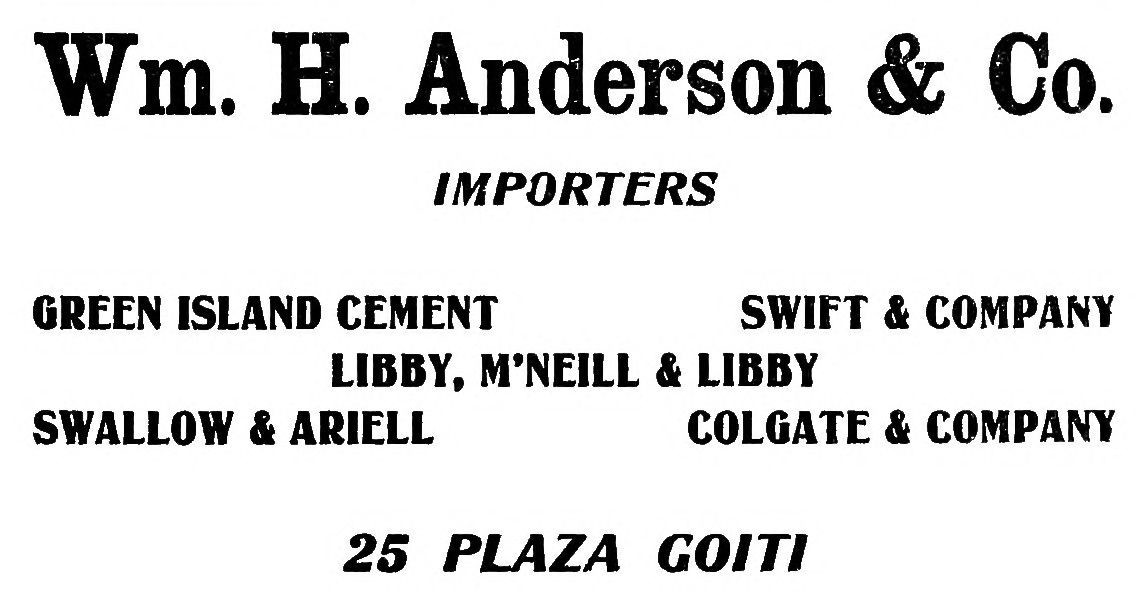
[Pg 120]

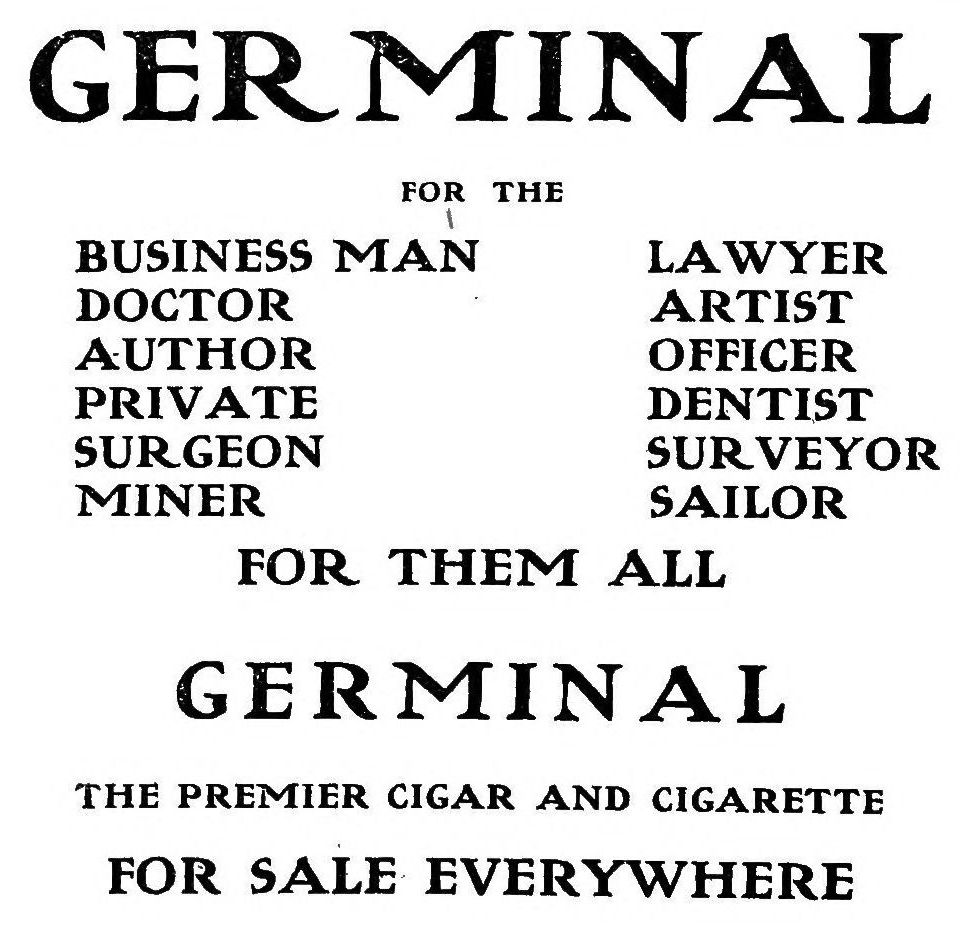
[Pg 121]
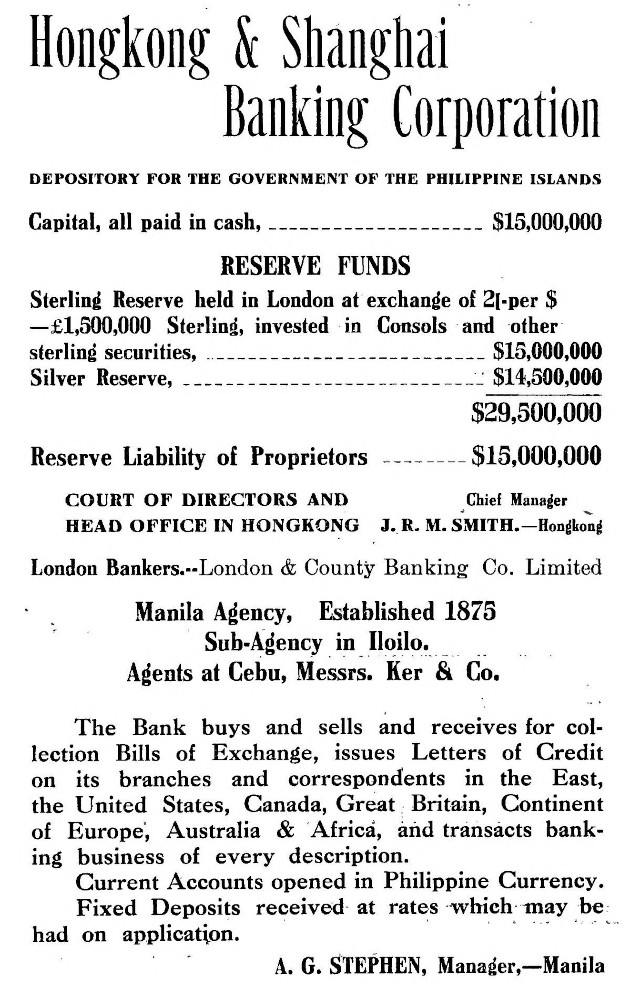
[Pg 122]
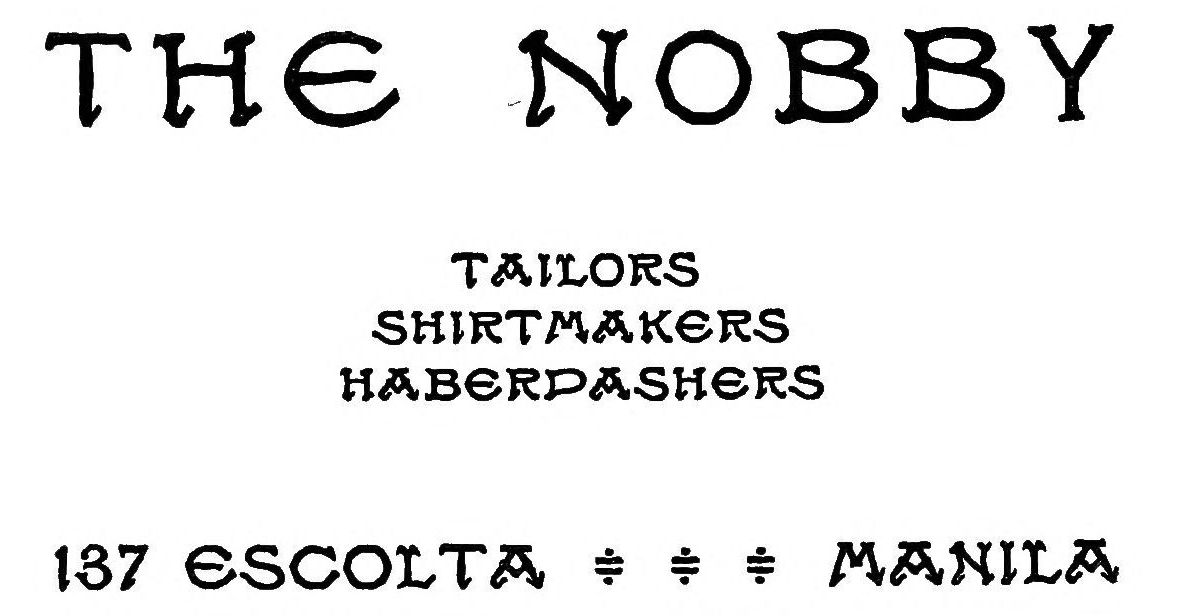


[Pg 123]

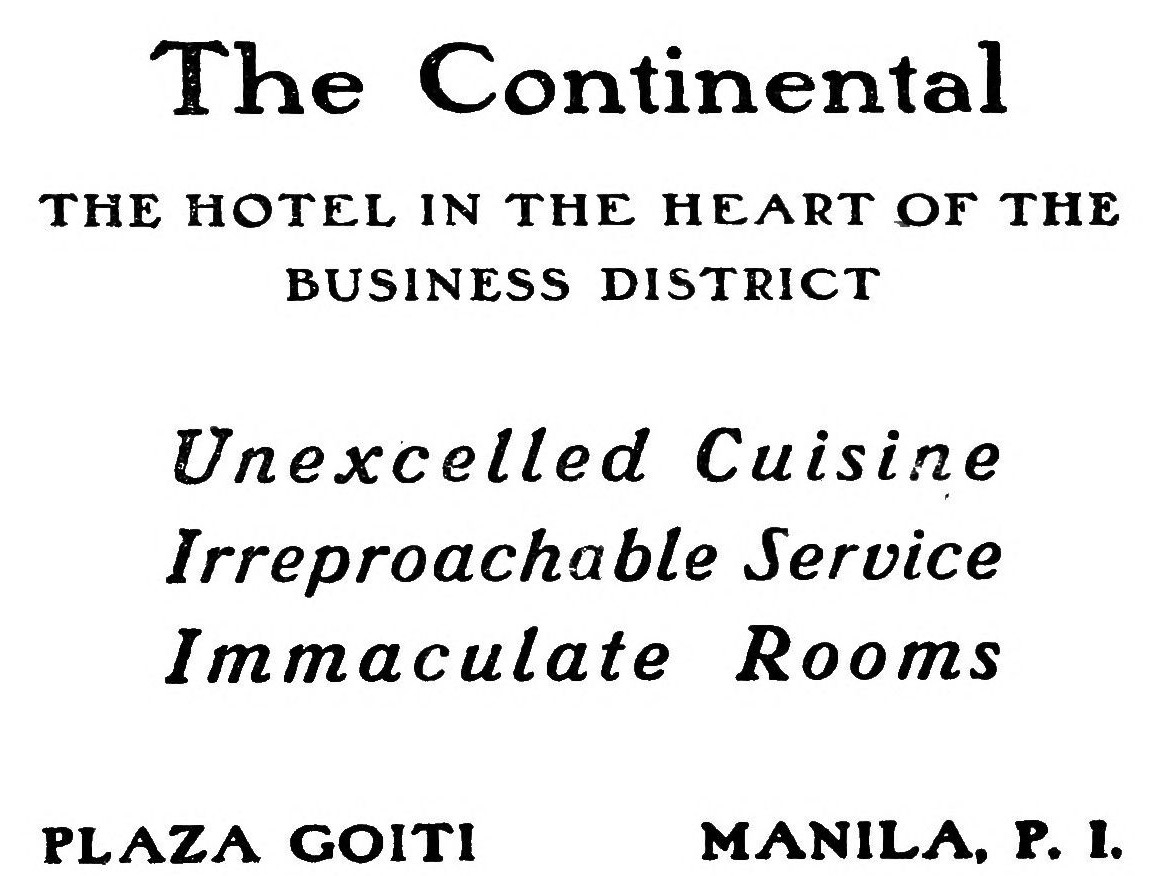
[Pg 124]

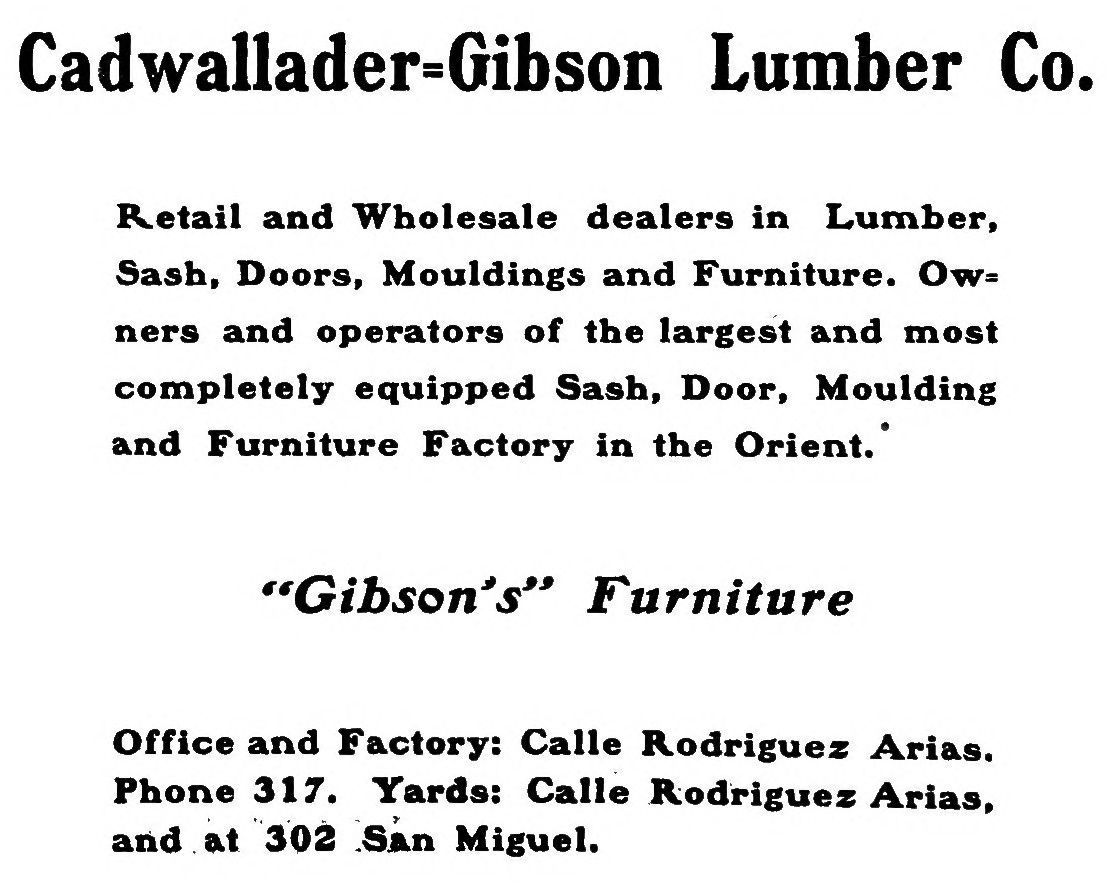
[Pg 125]
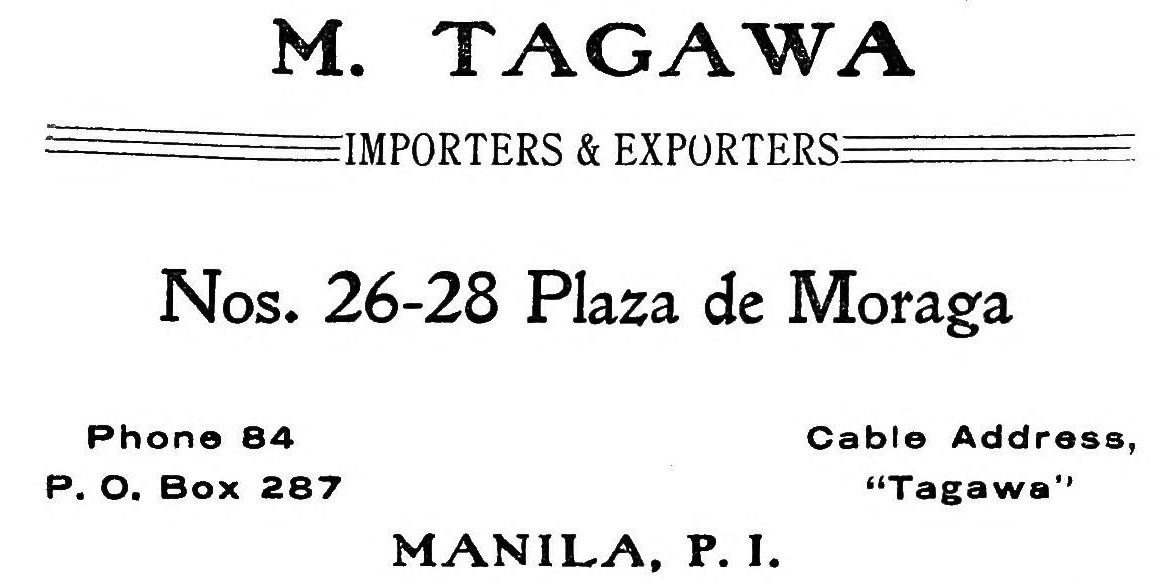


[Pg 126]
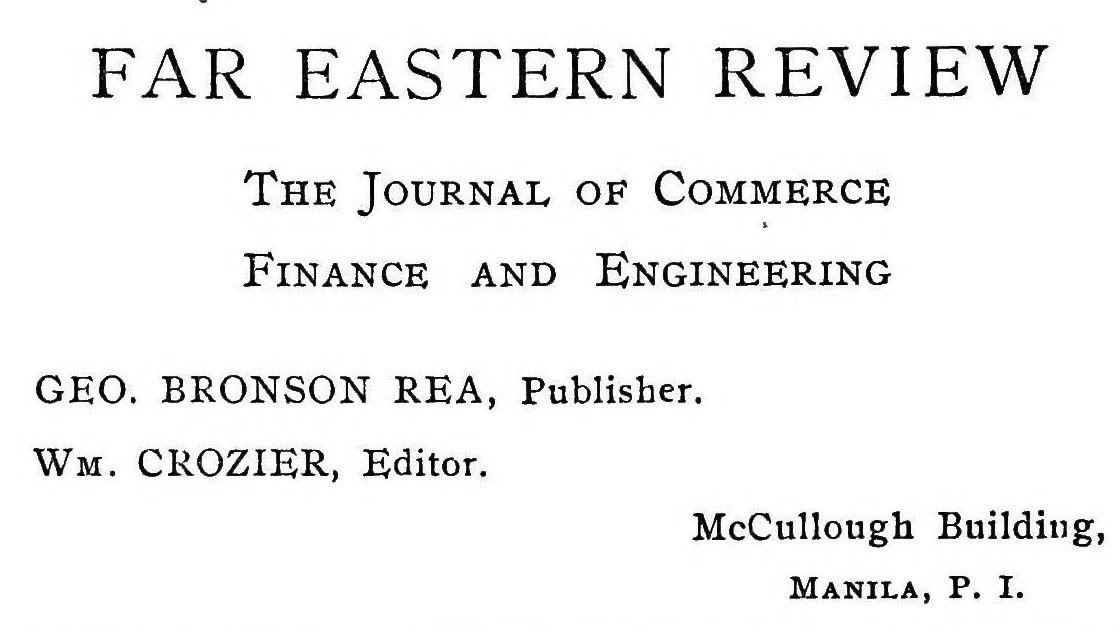
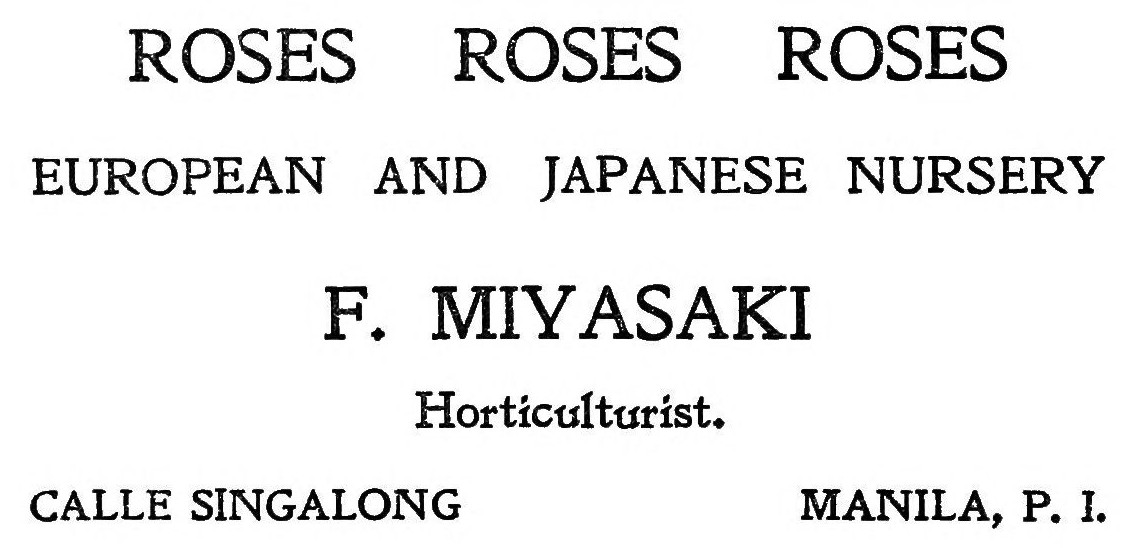
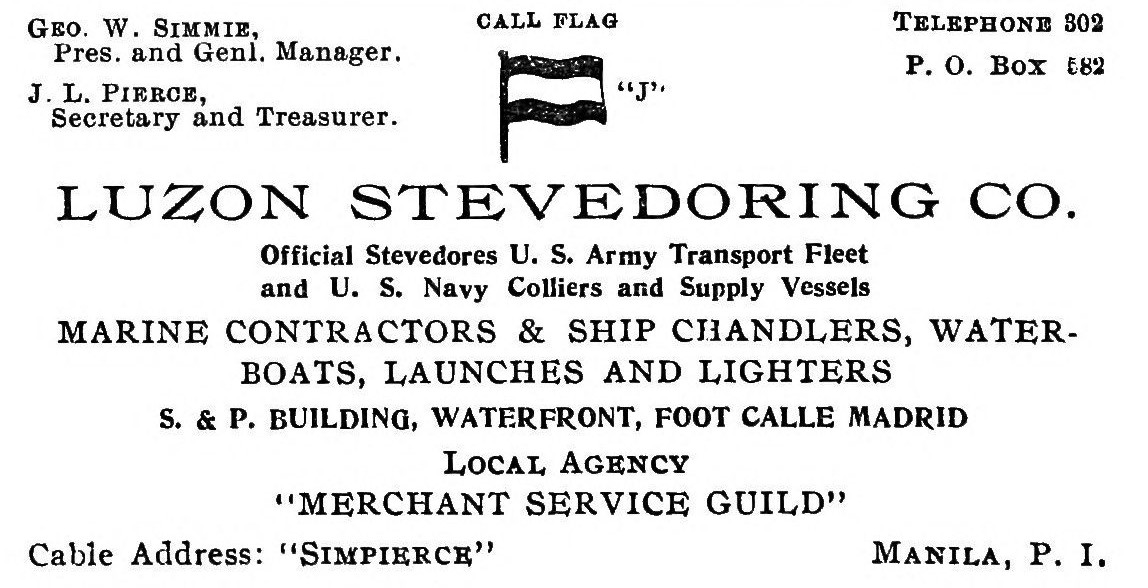
[Pg 127]

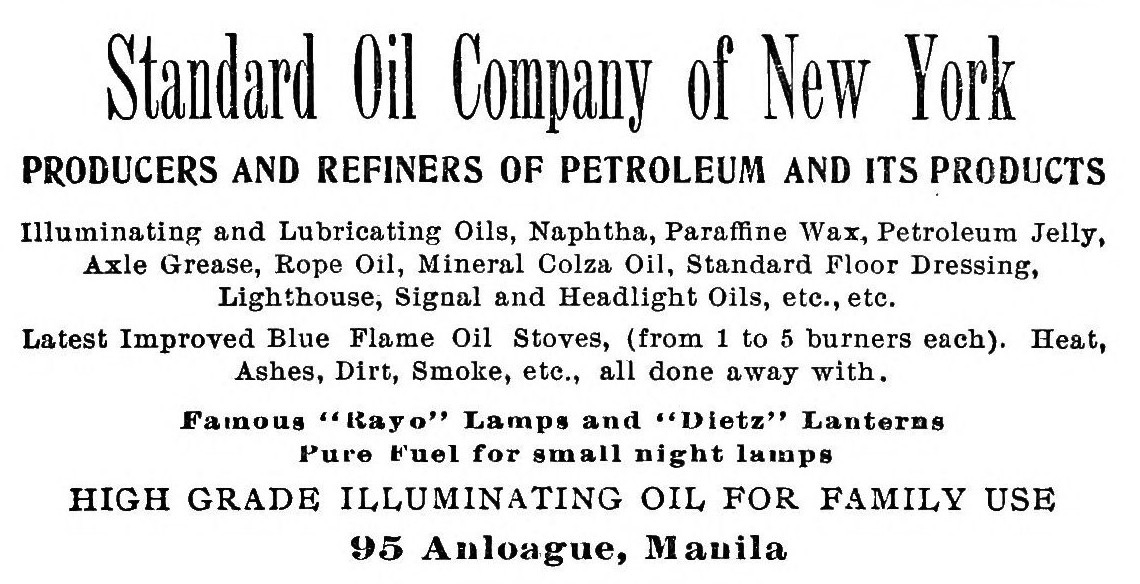
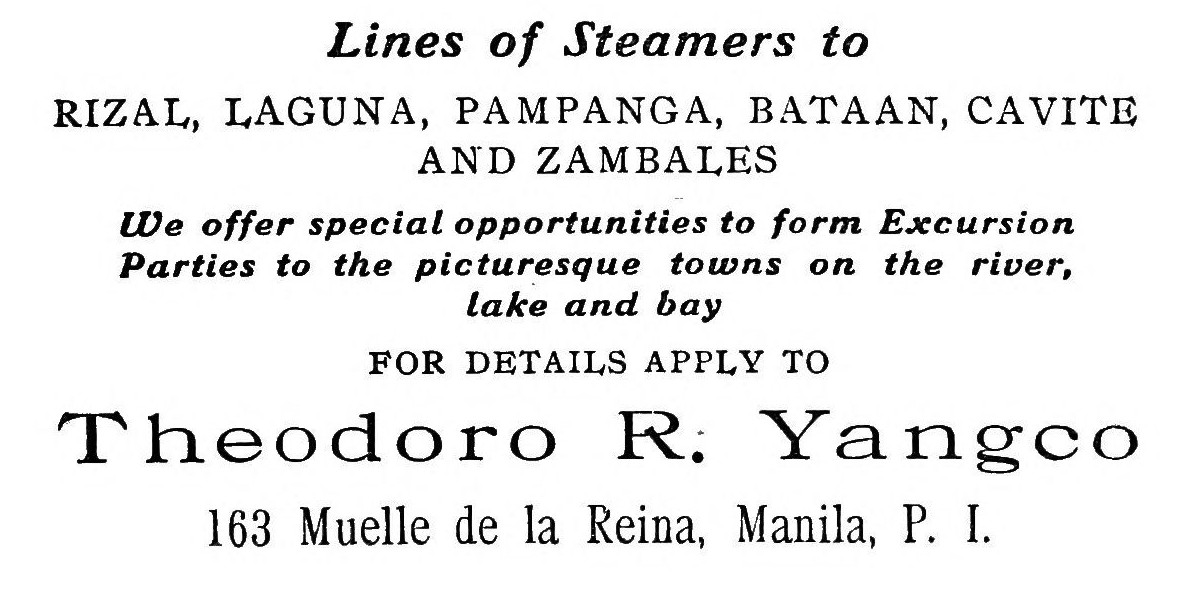
[Pg 128]
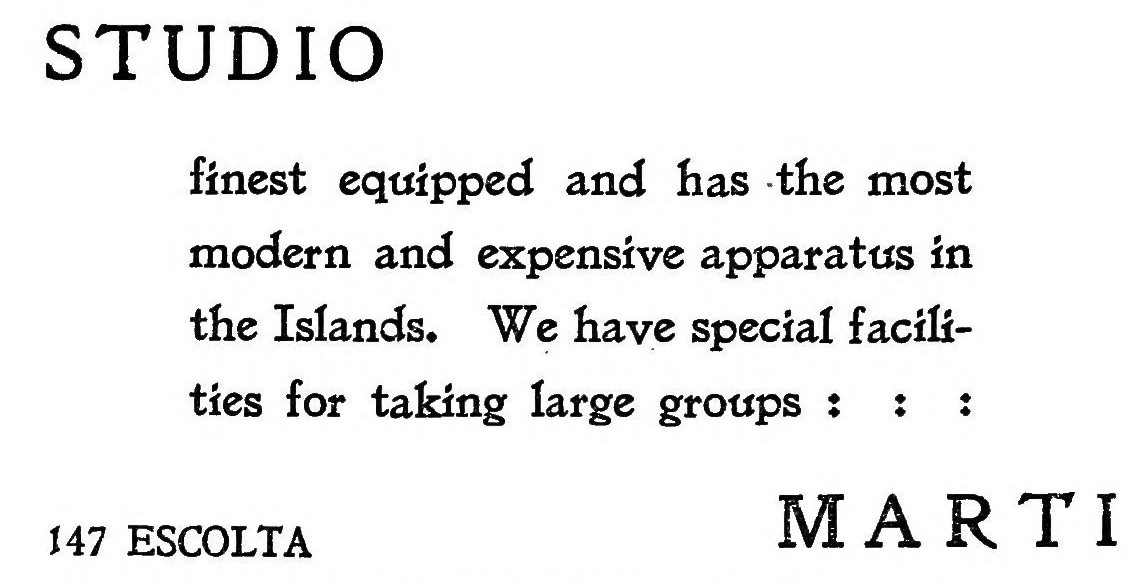
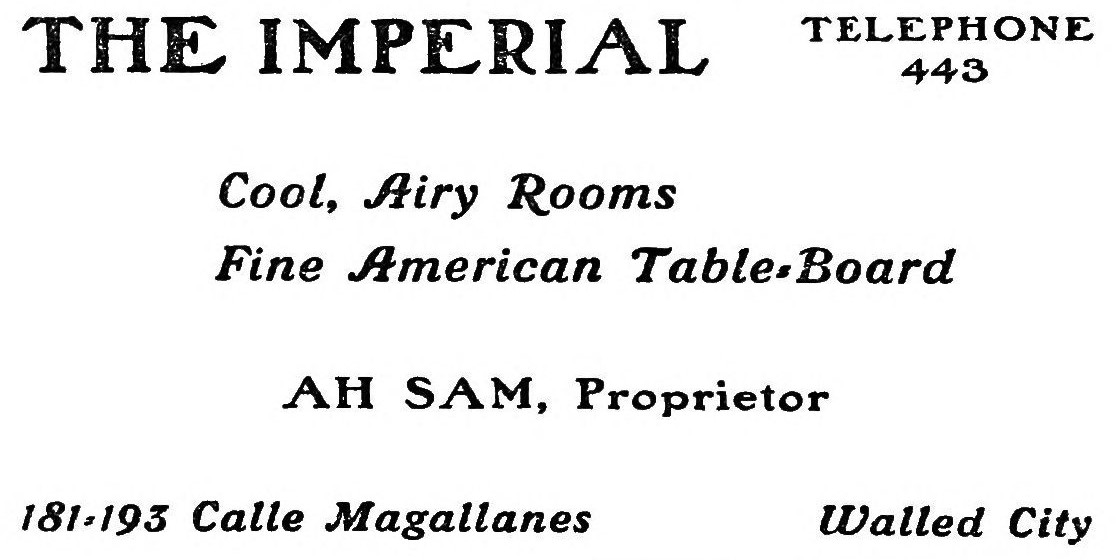
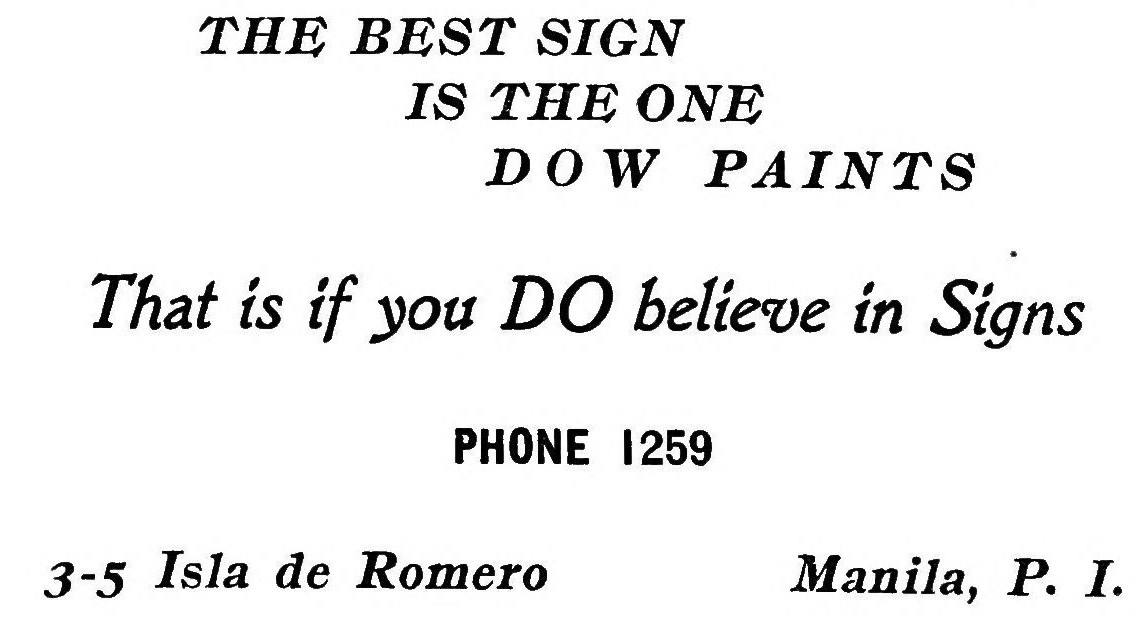
[Pg 129]
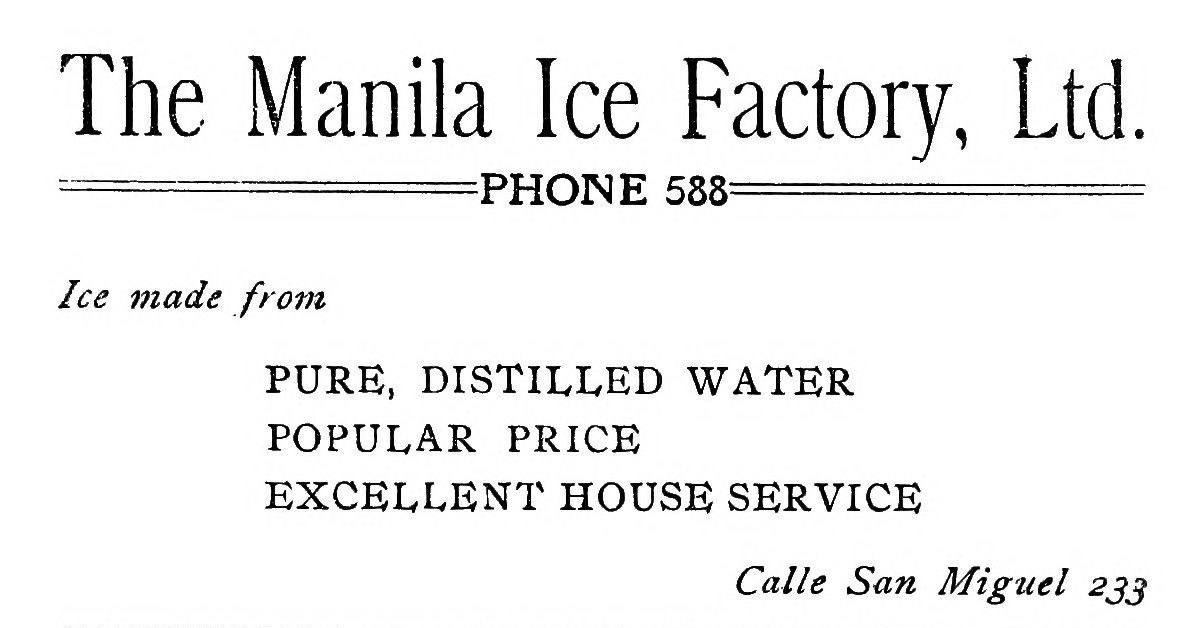
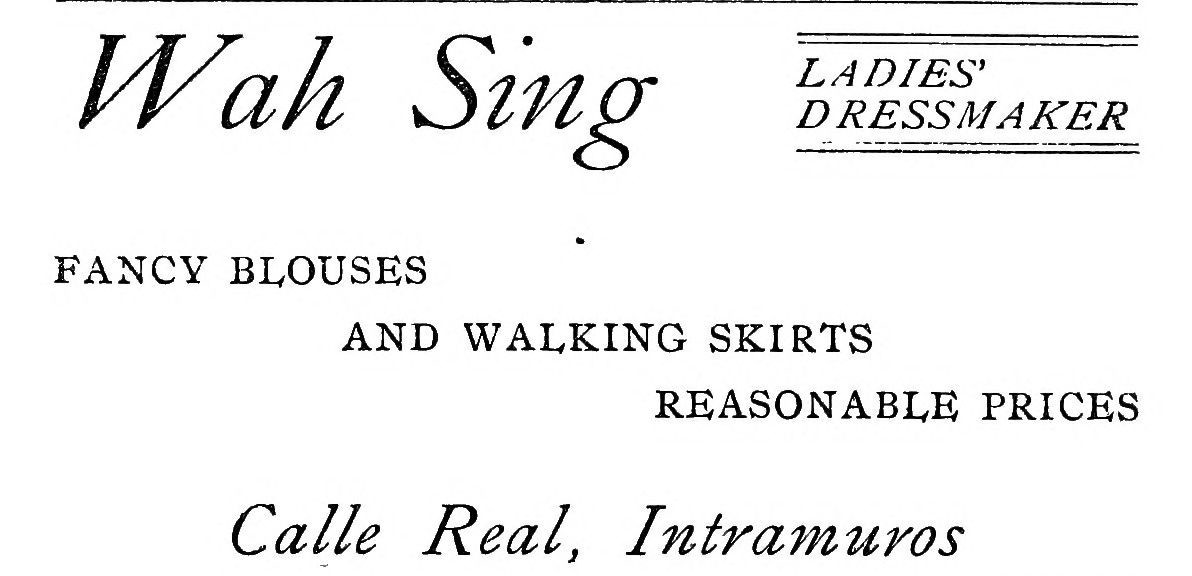


[Pg 130]
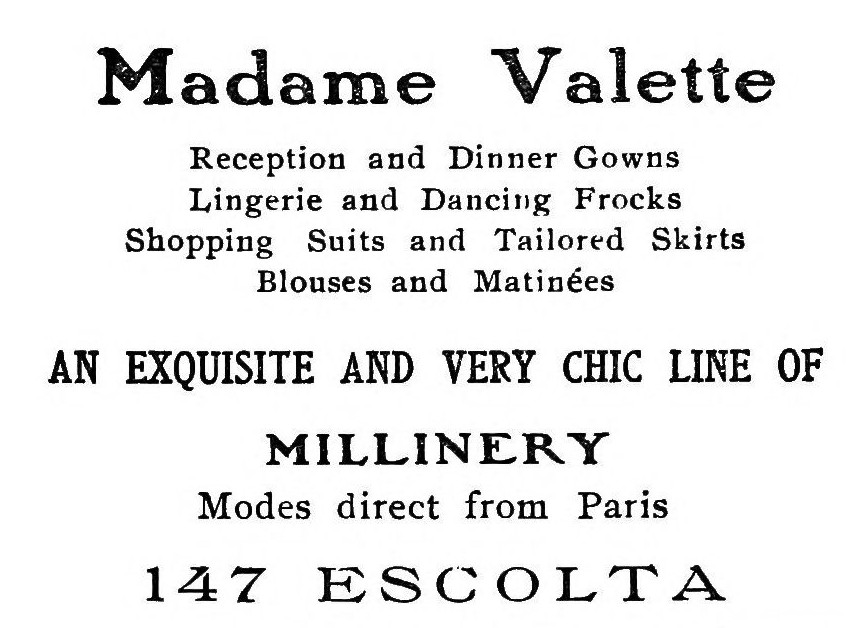


[Pg 131]

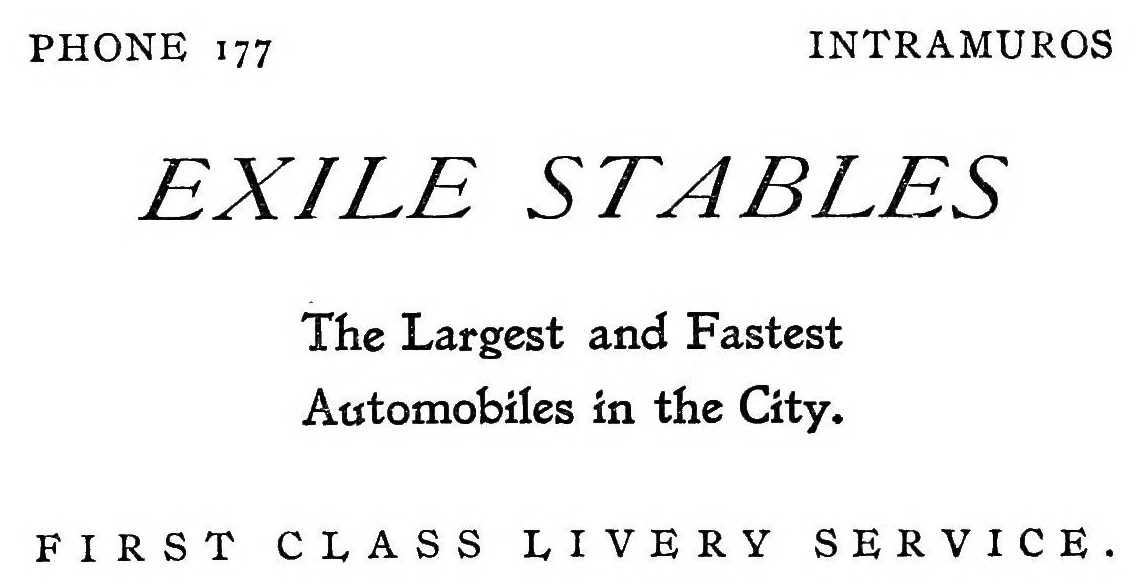
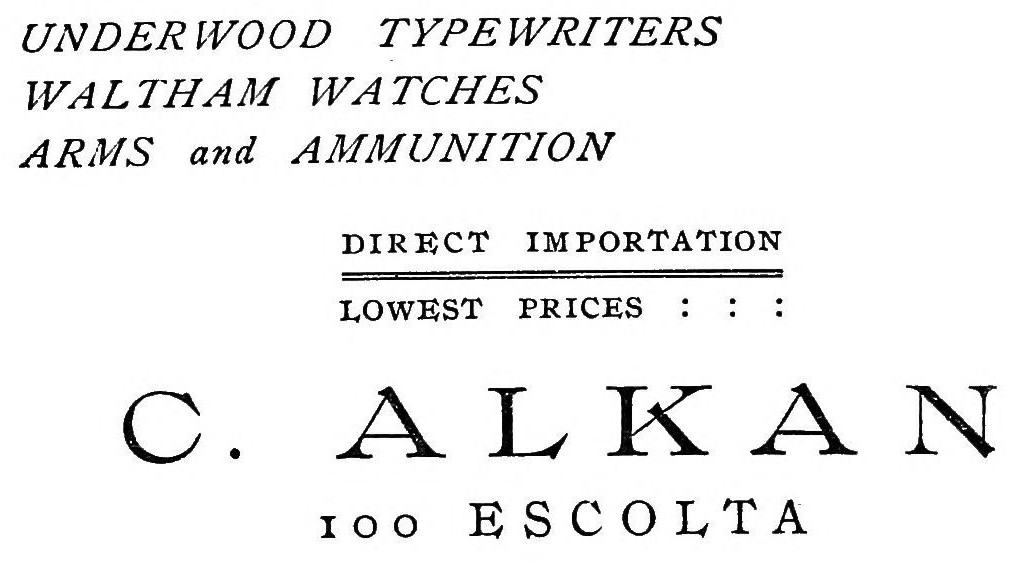
[Pg 132]
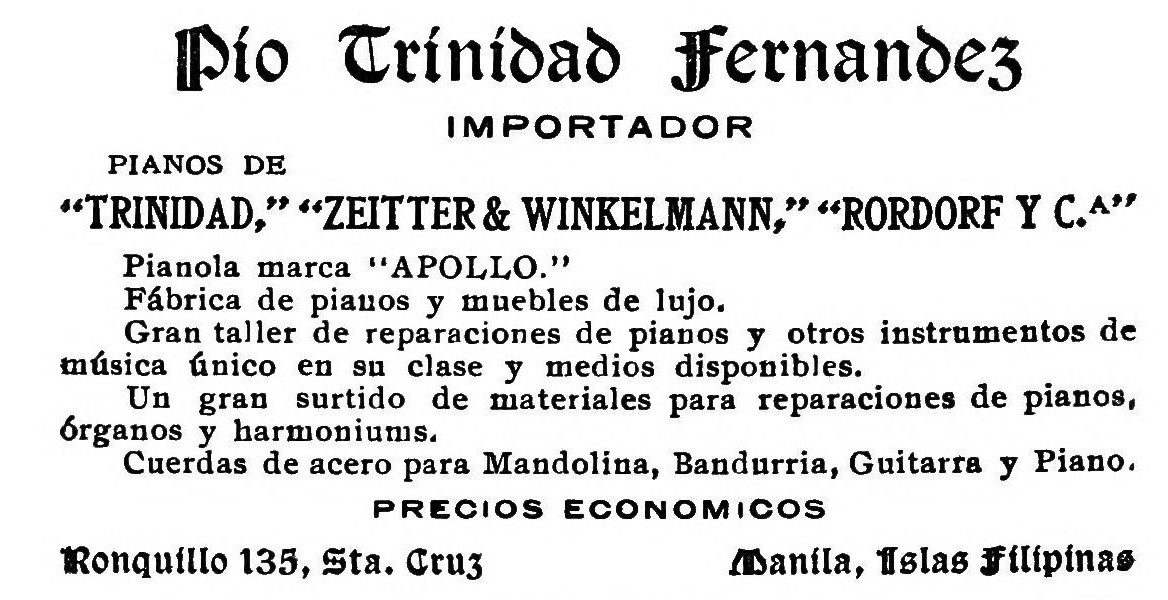

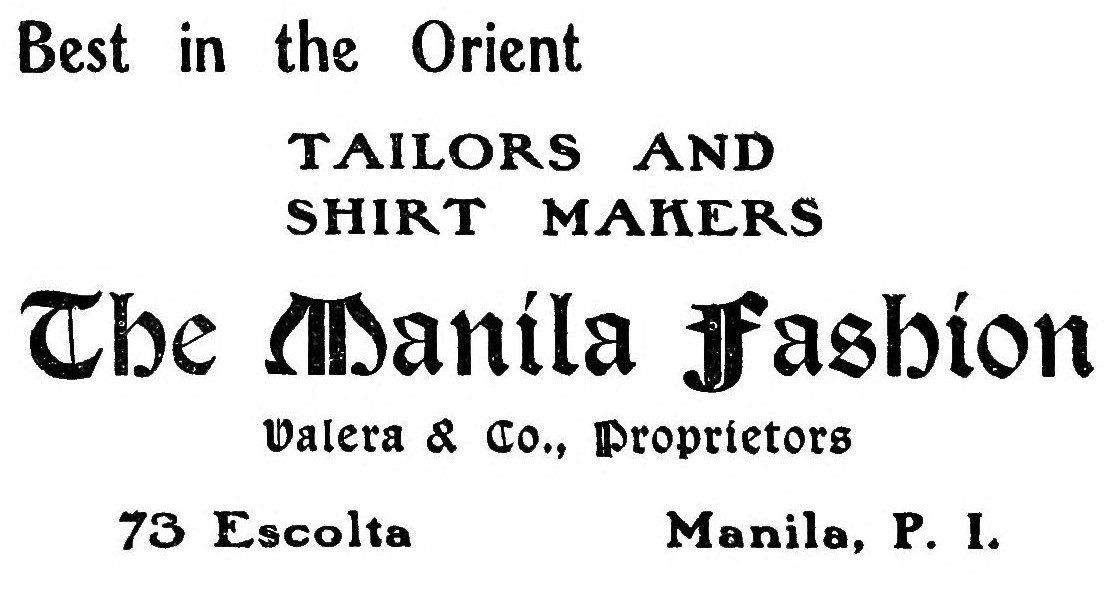
[Pg 133]
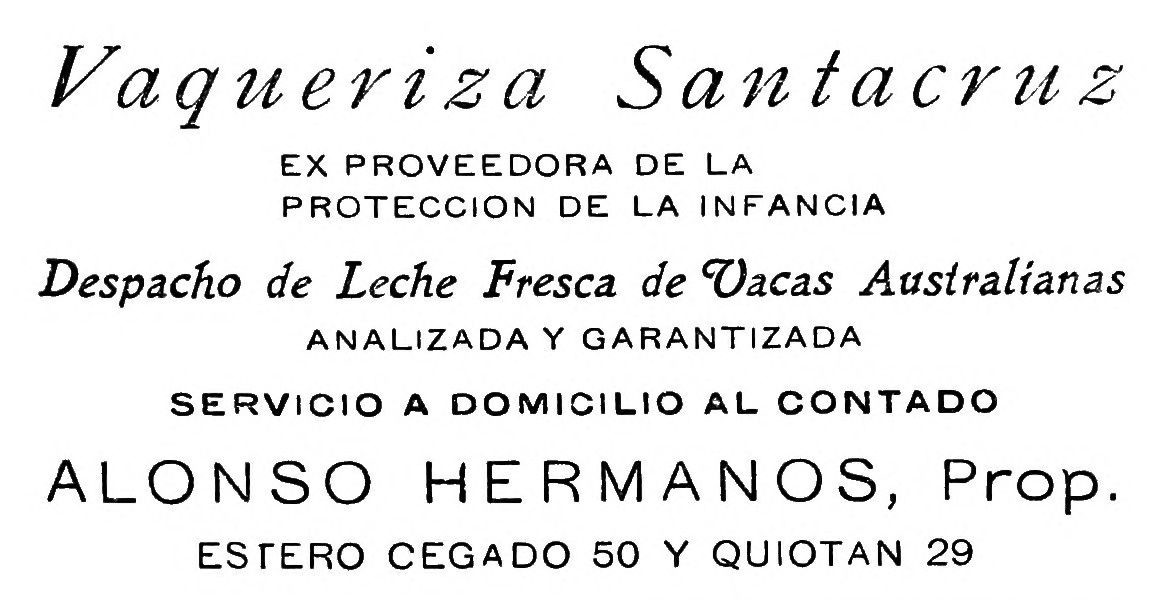

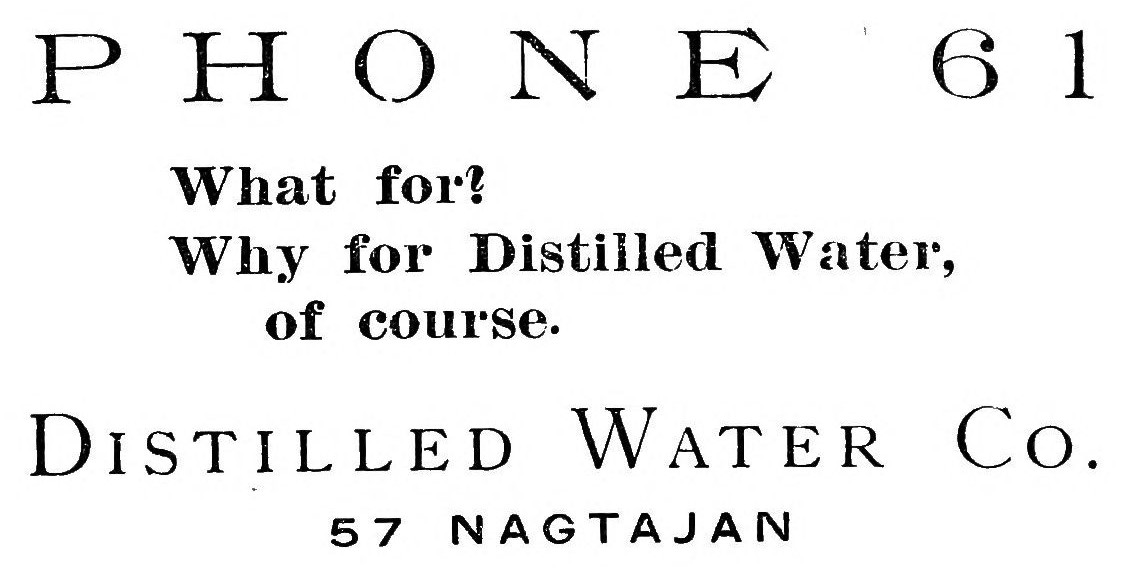
[Pg 134]
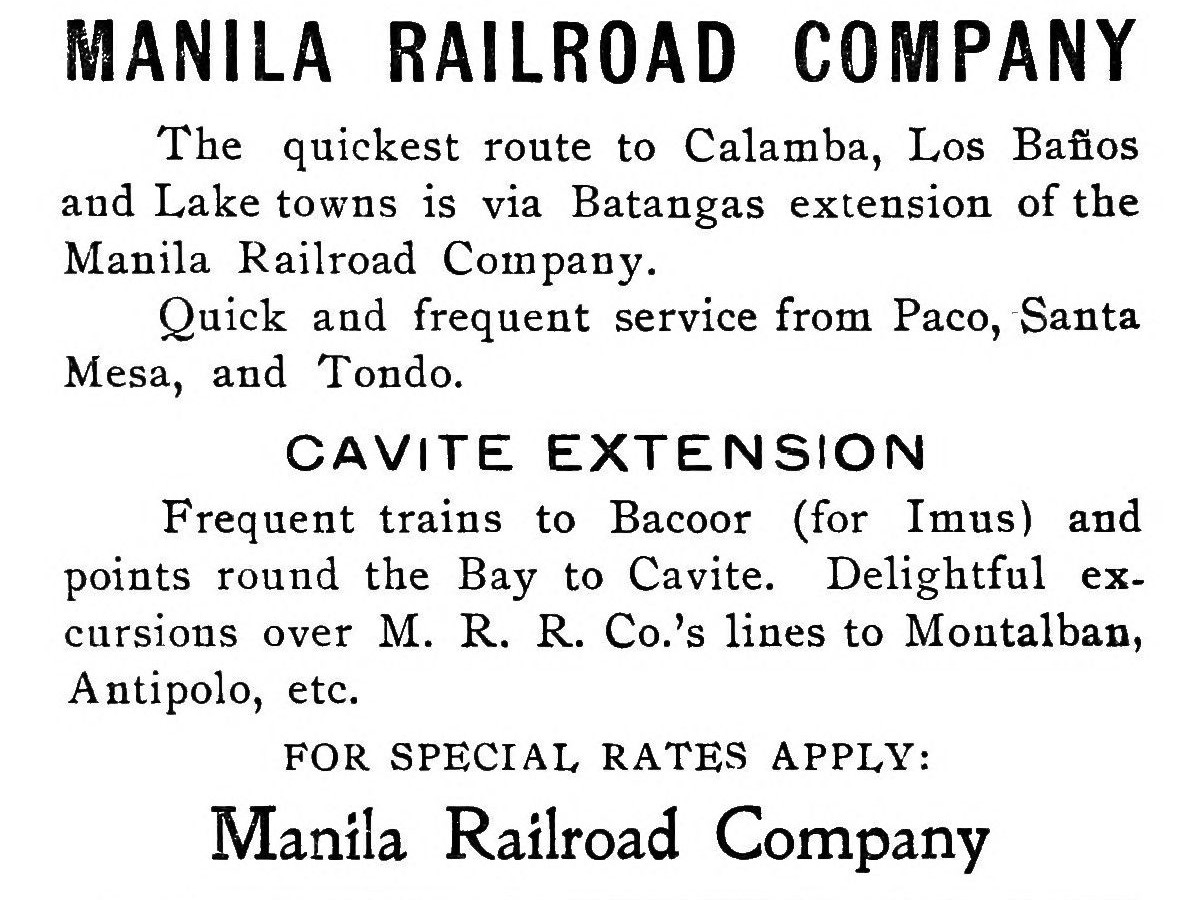

[Pg 135]

Errors in punctuation have been fixed.
Page 20: “a a few” changed to “a few”
Page 23: “gates of Pyengyang” changed to “gates of Pyongyang”
Page 24: “The guage” changed to “The gauge”
Page 30: “Greek panitings” changed to “Greek paintings”
Page 31: “evening entertaiment” changed to “evening entertainment”
Page 46: “mayor it justly” changed to “mayor is justly”
Page 51: “Uyeno and Ochadomidzu” changed to “Uyeno and Ochanomidzu”
Page 69: “House of Purs” changed to “House of Peers”
Page 71: “I revisted” changed to “I revisited”
Page 76: “electricity, manufactury” changed to “electricity, manufactory”
Page 85: “very unsatifactory” changed to “very unsatisfactory”
Page 86: “I belive” changed to “I believe”
Page 104: “bastian like walls” changed to “bastion like walls” “in crsytal” changed to “in crystal”
Page 106: “a Nation possesss” changed to “a Nation possess”
Page 132: “Fábrica de piauos” changed to “Fábrica de pianos”
This eBook is for the use of anyone anywhere in the United States and most other parts of the world at no cost and with almost no restrictions whatsoever. You may copy it, give it away or re-use it under the terms of the Project Gutenberg License included with this eBook or online at www.gutenberg.org. If you are not located in the United States, you will have to check the laws of the country where you are located before using this eBook.